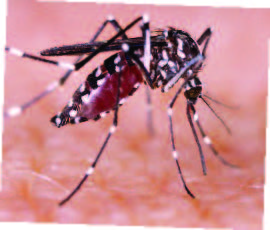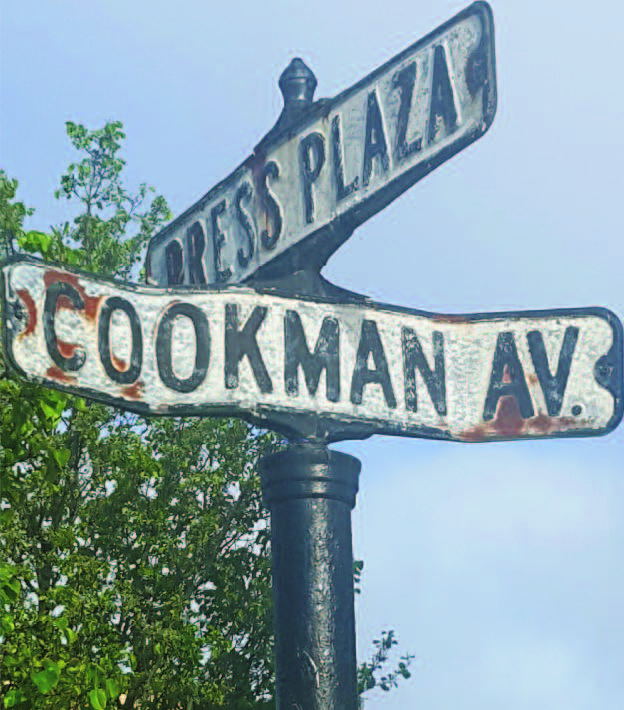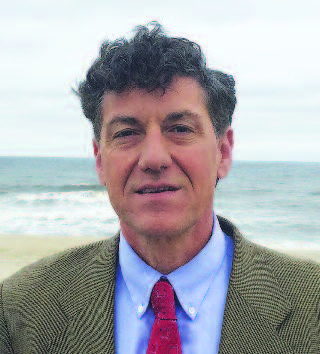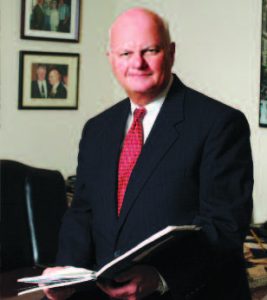 POWER PLAYER
POWER PLAYER
Gary S. Horan, FACHE, President & CEO, has been named to the prestigious Power 50 Healthcare list published each year by NJBIZ. This marks the fourth year that he has made the Power 50, during which he improved his standing by moving up 4 notches to #27. Horan is also the 2016 recipient of the New Jersey Hospital Association’s Distinguished Service Award – the highest recognition given by NJHA.
 A NAME KNOWN ‘ROUND THE WORLD
A NAME KNOWN ‘ROUND THE WORLD
The reputation of the Trinitas School of Nursing stretches across the US and around the world. Nursing educators from the University of Auckland recently visited the school while in the New York metro area. Professor Melanie Birks and Associate Professor Jane Mills, of the University of Auckland, and Dr. Karen Hoare of the Centre for Nursing and Midwifery at James Cook University, shared findings in a study inspired by a previous visit to the school in 2011, when they learned about the patient simulation teaching model used here.
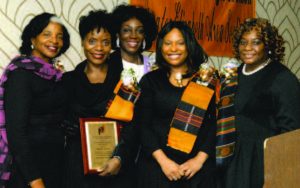 SHE’S NOTEWORTHY!
SHE’S NOTEWORTHY!
At the 11th Annual Harmabee Breakfast of the Greater Elizabeth Area Section of the National Council of Negro Women, Pamela Glover (second from left), Program Coordinator, Nursing Division, received the Section Award for her dedication and service. Pam celebrated with Cleadal Waye, Dr. Patricia Bennett, Erica Blount, and Joann Blount.
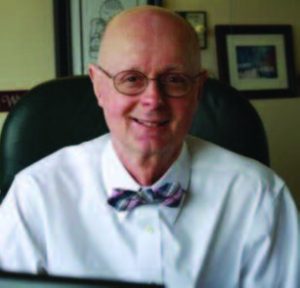 NEW NURSING LEADER
NEW NURSING LEADER
The New Jersey Chapter of the National League for Nursing recently announced that John Lanier, RN, MS, NE-BC, OR Manager, Bloodless Medicine & Surgery Program and Nursing Performance Improvement, has been appointed its president-elect to serve from 2016 – 2019.

Photo Credit: Grace Photography

Photo Credit: Grace Photography
JUST WHAT THE DOCTOR ORDERED!
While there are no people in these “People Page” photos, the completion of Phase 1 of Trinitas’ ER construction project will help many people – more than 73,000 per year to be exact. The new space will include 45 treatment rooms (up from its current 28), and separate treatment areas for families, children and seniors. Coming on line this month are a new reception/waiting/registration area, and a 128-slice CT Scanner. The overall project will be completed next year.
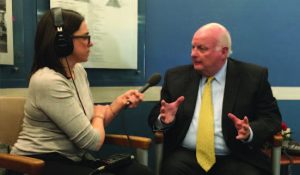 GARY HORAN INTERVIEWED ON NPR
GARY HORAN INTERVIEWED ON NPR
Freelance science writer Katie Hiler recently conducted a radio interview with President and CEO Gary S. Horan that was broadcast on WNYC, the local affiliate of National Public Radio. Ms. Hiler sought out Mr. Horan because of his passionate support of the reconfiguration of the Omnia plan of Blue Cross and Blue Shield.
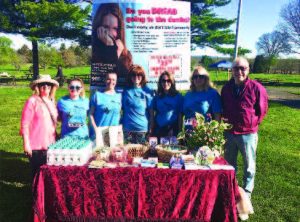 MILES OF SMILES
MILES OF SMILES
Westfield Smiles was one of the sponsors and participated on Sunday, April 24, 2016, in the 5th Annual NJ Miles with Moms 5k and Fun Run at Oak Ridge Park in Clark. The event was hosted by the Mothers’ Center of Central NJ with families and athletes throughout the local community running and walking to support mothers and families.
 Raw Milk: Coming Soon to NJ?
Raw Milk: Coming Soon to NJ?
A recent study out of Munich, Germany confirms the fact that children who consume unprocessed cow’s milk are less likely to develop asthma. The research, which was published in The Journal of Allergy and Clinical Immunology concludes that “raw” milk’s higher level of omega-3 fatty acids is a contributing factor. Omega-3 fatty acids are critical to human health, but cannot be created in a lab; they must come from dietary sources. The study’s authors stop short of recommending raw milk, however, because it may contain pathogenic microorganisms. “It is a well known fact that the processing of our foods in this country takes away some vital nutrients, vitamins and minerals,” says
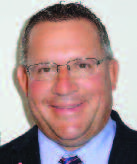
Kevin Lukenda, DO
Chairman, Family Medicine Department 908.925.9309
Dr. Kevin Lukenda, Chairman of the Trinitas Family Medicine Department. “It’s a Catch-22 situation, as the processing of our foods makes them safer from an infectious point of view but takes away many of the health and nutritional benefits.” The sale of raw milk is illegal in New Jersey, however a bill introduced in the legislature this winter may change its status. If so, it will be available to consumers only at the dairies where it is produced, not in stores.
 Almond Joy
Almond Joy
A study published in the Journal of Nutrition Research suggests that a handful of almonds a day may be enough to keep the doctor away. A group of 28 child-parent groupings were instructed to consume almonds (or almond butter) each day for three weeks—the adults 1.5 ounces and the kids a half-ounce. University of Florida researchers measured the participants’ Healthy Eating Index—a measure of diet quality based on USDA guidelines—before and after the three-week period. Both parents and children showed exactly the same improvement in their scores (roughly 14 percent), which was attributed in part to decreasing their intake of empty calories. Kids will be kids, however: Researchers noted that many of the children said they didn’t like the taste of almonds or were tired of eating them every day. “This study showed that changing just one component of a diet can have a positive effect,” says

Michelle Ali, RD
Director, Food and Nutrition, Trinitas Regional Medical Center 908.994.5396
Michelle Ali, Director of Food and Nutrition Services for Trinitas. “Eating the same foods each day can becomes monotonous and boring, especially for children. I’d add in a handful of almonds to salads, add almond butter to apple slices, and even to your milkshakes. You’ll improve your nutrition and ease boredom.”
Big Bang
While the health risks of e-cigarettes (both to the smoker and others) are still being hotly debated, the overheating dangers of the device itself have been drawing attention of late. Every year, a handful of “vapers” report that their e-cigs have exploded—often causing devastating injuries. The culprit appears to be the lithium batteries that power the devices. The industry has grown to $2 billion-plus annually, with roughly 4 percent of the U.S. population using e-cigarettes regularly. Industry advocates point out that accidents are rare, and that they typically involve extreme conditions or damaged batteries, which can produce shorts. Last December, Daniel Pickett was driving through his hometown in Central Washington when he heard a static-y sound a half-second before his e-cigarette exploded, burning his hand and arm, and leading to skin grafts and five surgeries. Daniel won’t be vaping again. “I just think that if people really knew this could explode in your face, they would consider twice putting a device like this to their mouth,” Pickett says.
 Connection Between Autism and Early Death
Connection Between Autism and Early Death
The effort to understand, treat and possibly prevent autism has acquired new urgency after findings by Sweden’s Karolinska Institute published in the March issue of The British Journal of Psychiatry. Individuals on the autism spectrum tend to die significantly younger than other adults—on average 18 years younger. The culprit is not cancer or heart disease, as is the case in a great many premature adult deaths. It’s suicide. “The inequality in outcomes for autistic people shown in this data is shameful,” says Jon Spiers, who heads the British charity Autistica. “We cannot accept a situation where many autistic people will never see their 40th birthday.” The Swedish study tracked 27,000 people with autism and 2.5 million people who were not diagnosed with the social communication disorder. The age at death also changed relative to a person’s cognitive ability. Those considered “high-functioning” with strong language skills lived longer, but still were twice as likely to die young as the general population. “This research really helps characterize the magnitude of health problems faced by people with social communication disorders in Western countries,” says Trinitas psychiatrist

Salvatore Savatta, MD
Deputy Chairman
Dept. of Behavioral Health & Psychiatry
908.994.7281
Dr. Salvatore Savatta. “More research is required on how to engage and retain these at-risk individuals in mental health treatment and related services.”
Zika Update
The Zika scare may come uncomfortably close to home this summer, thanks to the Olympic Games. Although host country Brazil is working to mitigate the Aedis aegypti mosquito—and August is “winter” in Brazil—if the disease comes back to the U.S. through one of the 50,000-plus Americans who reportedly plan to travel to the games, it will arrive during one of our warmest months. That has infectious disease physicians concerned, and has already launched a debate about the best way to attack Zika if it gains a foothold in North America. One plan involves genetically modifying the male mosquito to produce offspring that die in the larval stage. “It is likely that cases will be transmitted here in New Jersey this summer,” says

William Farrer, MD
Chief of Infectious Diseases Trinitas Regional Medical Center
Dr. William Farrer, a member of the Infectious Disease Division of the Trinitas Medicine Department. “It is important that people take steps to reduce mosquito habitats, such as removing standing water from their yards. It is also important to employ methods to reduce your chances of mosquito bites, such as wearing long sleeved clothing and applying insect repellent when outdoors. The CDC website [cdc.gov/zika] has many helpful suggestions and is frequently updated.”
 Fish Warning For Mothers-To-Be
Fish Warning For Mothers-To-Be
The health benefits of fish have been touted for decades, but because of possible exposure to organic pollutants, most doctors are now suggesting people limit their consumption. According to a recent article in JAMA Pediatrics that advice is especially important for pregnant women. Those pollutants appear to have endocrine-disrupting properties that contribute to rapid growth in infancy and the development of childhood obesity. The study cited looked at more than 28,000 pregnant women in Europe and the U.S. and tracked the progress of their children to age 6. Women who had more than three servings of fish per week gave birth to children with higher body mass indexes at ages 2, 4 and 6. “The latest FDA and EPA recommendations suggest that pregnant women eat 8 to 12 ounces per week, in two or three servings,” says
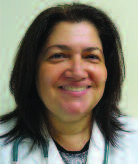
Yelena Samofalov, MD Trinitas Pediatric Health Center 908.994.5750
Dr. Yelena Samofalov of the Trinitas Pediatric Health Center. “It’s also important to remember that not all types of fish accumulate the same amount of pollutants.” Indeed, while researchers accounted for different fish types, they were unable to drill down on cooking procedures or the quality/type of water fish came from—which may influence the data. Fish associated with higher amount of mercury—which is especially dangerous for the developing brain of neonates—should be avoided during pregnancy and while breastfeeding, Dr. Samofalov adds. Preferences should be given to salmon, pollock, shrimp, tilapia, canned tuna, catfish and cod.
 Going Gray
Going Gray
Who among us does not rue the day when we go gray?For some, the process is gradual; for others, not. Age and stress are the prime culprits but, according to researchers from University College in London, for about 30 percent of people of European descent, gray hair is a genetic inevitability. The IRF4 gene, which appears to cause people to gray prematurely, is linked to the production of melanin, which regulates eye, skin and hair color. This discovery should be of particular interest to hair care companies which might be able to develop products that delay or reverse graying as hair grows.
The PGA Championship is back at Baltusrol.
By Steve Foehl
The first weeks of spring annually signal the start of golf in New Jersey, and coincide with the playing of the first major championship of the year, The Masters. The beauty and drama of the tournament at Augusta National Golf Club heralds the season, like so many Opening Days at ballparks around the country. But this year is even more special than others, as the final major of the year, The PGA Championship, returns to Baltusrol Golf Club in Springfield this July. It was last played there in 2005, when Phil Mickelson won by one shot over Thomas Bjorn and Steve Elkington, and by two shots over Davis Love III and Tiger Woods.

www.istockphoto.com
New Jersey and Baltusrol are no strangers to big-time championship golf. The first time the PGA was played in New Jersey was 1942, at Seaview Country Club in Galloway, near Atlantic City. The tournament was won by Sam Snead, who reported for Naval duty shortly after. In addition to that 2005 PGA, Baltusrol has hosted seven United States Open Championships—the first in 1903 and the last in 1993. Moreover, Baltusrol has hosted fifteen

General Mills, Inc.
United States Golf Association national championships. In addition to the seven U.S. Opens, the venerable course in Springfield has hosted four U.S. Amateurs, two U.S. Women’s Amateurs and two U.S. Women’s Opens. In all, 15 different New Jersey clubs have hosted 59 USGA national championships
This July, The Ridgewood Country Club in Bergen County will host its fourth national championship, the U.S. Girls’ Junior; in 2017, Trump National–Bedminster will host the U.S. Women’s Open. Previously, in 2009, Trump Bedminster hosted the U.S. Girls’ and Boys’ Juniors at the same time. Incidentally, Jordan Spieth won the U.S. Junior at Trump Bedminster. He won a second U.S. Junior title in 2011—a sign of good things to come for him. For the record, Tiger Woods is the only player to win three U.S. Juniors.
New Jersey boasts so many wonderful courses, which is one of the reasons—along with a large population base—that golf is thriving in the Garden State. Pine Valley, Baltusrol (both the Upper and Lower courses), Plainfield, Somerset Hills, Ridgewood and Galloway National have all made the Top 100 of the major magazine rankings. In addition, courses open to the general public, including Ballyowen, Neshanic Valley, Hominy Hill and Atlantic City, are consistently highly rated. All this shows the breadth of wonderful opportunities to play around the state. There is a fantastic mix of old and new, public and private.
The National Golf Foundation, which tracks various barometers in the sport, reports that rounds are up for the state each year for the past three years. New Jersey has five chapters of The First Tee, a national organization that not only introduces youngsters 8 to 18 to golf, but also teaches them life skills. Further, these chapters introduce young people to caddying, as well as opportunities to earn money, qualify for scholarship aid, and work toward higher education through a program called A Path to College. If you or a family member would like to learn the game, there are several ways to go. Many counties have programs for group lessons and many courses offer a starter program called Get Golf Ready. You might also consider individual lessons from a professional, at a course or driving range; for information go to pga.com.
All of this portends a bright future for golf in the Garden State. There are so many opportunities to play great courses around New Jersey, whether you are an avid golfer or learning the game, even if you’re a beginner. Golf can be a wonderful social and family activity. This summer, the Lower Course at Baltusrol will offer a wonderful opportunity to see the best players in the world in a remarkable park-like setting—athletes like Jordan Spieth, Jason Day, Phil Mickelson and Bubba Watson. By following the greats of the game, you can learn so much about playing golf,
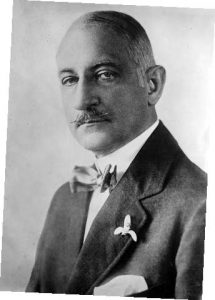
Library of Congress
PGA TURNS 100
One hundred years ago, Rodman Wanamaker organized a luncheon that led to the formation of The PGA of America. Wanamaker, a department store magnate, believed golf professionals might boost equipment sales if they formed an association. He invited a number of them—along with leading amateurs—to gather for lunch at the Taplow Club in the Martinique Hotel in New York City to discuss his ideas.
Later that year, the PGA of America was founded in New York City with 35 charter members. During that luncheon, Wanamaker hinted that the newly-formed organization needed an annual “all-professional” tournament, and offered to put up $2,500 (and various trophies and medals) as part of the prize fund. The first PGA Championship was played later that year in October at Siwanoy Country Club in Bronxville, NY. The inaugural champion was Jim Barnes, who also won the next
PGA, which was played in 1919. The championship was not played in 1917 and 1918 due to World War I. “Long Jim,” as Barnes was known, also won a U.S. Open and a British Open. His last professional win was the New Jersey State Open, in 1939, when he was working at the Essex County Country Club in West Orange.
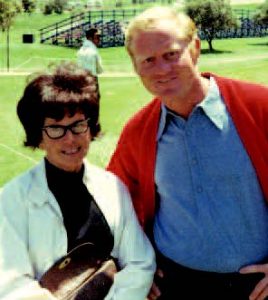
Upper Case Editorial
A BRIEF HISTORY OF GOLF IN THE GARDEN STATE
Golf arrived in North America in the 1870s. In 1887, the Essex County Club in West Orange opened as New Jersey’s first course. Over the next decade, the state saw a boom in club- and course-building, catering to wealthy and privileged New Yorkers (both men and women). Golf pros and course designers were imported from England and Scotland. The United States Golf Association was formed in 1894; the USGA and its museum are now headquartered in Far Hills. Also in 1894, a group of female golf enthusiasts opened the first ladies-only golf club, in Convent Station.
Legend has it that the term birdie originated in New Jersey. In 1899, during a round at the Atlantic City Country Club, Ab Smith described a great approach as a “bird of a shot.” His foursome agreed that they would call any hole completed under-par a “birdie.”
Of the many championships hosted by Baltusrol, perhaps the most interesting was the 1967 U.S. Open. The golf world was abuzz after the third round when
Marty Fleckman sat atop the leader board. A 23-year-old amateur competing against the giants of the day, he went into the final round one stroke in front of defending champ Billy Casper, as well as Arnold Palmer and Jack Nicklaus (right). Fleckman was no slouch—a former NCAA champion, he won his first tournament after turning pro later that year. However, he would finish well off the pace, as Nicklaus and Palmer duked it out over the last 18 holes, with the Golden Bear taking the title by 4 strokes
The 5th-place finisher, a club pro from Texas, made just enough money at Baltusrol to keep playing that season and earn his tour card. His name was Lee Trevino.
Editor’s Note: Steve Foehl spent 25 years as Executive Director of the New Jersey State Golf Association. He continues to serve as a rules official for the NJSGA and the USGA and heads a consulting firm, Flagstick Golf Advisors (flagstickgolfadvisors.com), which provides private club management with strategic solutions for unfamiliar operational challenges. To purchase tickets to the PGA Championship, which takes place the week of July 25th (final round on Sunday the 31st), log onto pga.com and click on Tickets.
 SPORTING CLAYS TOURNAMENT AND MUCH MORE
SPORTING CLAYS TOURNAMENT AND MUCH MORE
For the better part of a decade, the Annual Andrew H. Campbell Memorial Sporting Clays Tournament has been a winning fundraiser for the Trinitas Health Foundation, and it gets better year after year. You can a part of the eighth year of this multi-faceted event that takes place on Thursday, June 16 at Hudson Farm Club in Andover, a woodland gem set in the rolling hills of Sussex County in beautiful northwest New Jersey. For outdoorsy types, clay shooting and nature photography have natural appeal. If being indoors is more to your liking, you can be pampered and rejuvenated in a relaxing spa experience at Salon International in nearby Sparta. The day includes a delicious Pig Roast Luncheon. Whatever your interest, this event fits the bill while raising money for the Trinitas Palliative Care Department. If any of these activities sound like your kind of day, contact the Trinitas Health Foundation at (908) 994-8249 or Laura Ciraco at lciraco@trinitas.org or register online at https://events.hud-sonfarmnj.com/trinitas/. The gift of tickets purchased for this event might earn you high points with your Dad or Grad!
ARE YOU UP TO THE CHALLENGE?
If you have visited the main campus of Trinitas Regional Medical Center lately, you’ve probably noticed the construction happening in and around our Emergency Department. We are currently in the middle of an $18.7 million expansion and renovation of our ED, almost doubling its size and capacity and improving patient comfort, privacy and satisfaction.
In April we completed Phase I of the project, which included constructing brand new waiting areas and a dedicated advanced imaging suite. We are now well into Phase II, which includes brand new geriatric, behavioral health, fast track and pediatric areas. In December Phase III will commence, providing a beautiful cosmetic renovation to the rest of the department. With the project progressing on time and on budget, we are very happy to say we are on track to unveil a brand new ED in 2017.
We recently received some very exciting news about the campaign: The JC Kellogg Foundation has awarded us a $4 million challenge grant, meaning that all gifts over the next three years will be matched dollar-for-dollar until we finish the campaign! This is a wonderful time to support this very important project and double the value of your gift.
Please accept the challenge and make a gift today! Your donation will be matched dollar-for-dollar by the JC Kellogg Foundation, and will help us create a bigger, better and state-of-the-art ED for all of our patients!
To make a gift to the Emergency Department Capital Campaign, please contact Nadine Brechner at nbrechner@trinitas.org or Rob Eccles at reccles@trinitas.org or call the Foundation office at (908) 994-8249
Researching your ancestors? Be careful…you just might find what you’re looking for.
By Mark Stewart
My college-age daughter’s curiosity got the better of her one day. She spit into a plastic tube and sent it off to Ancestry.com for genetic analysis. The results were almost exactly what we expected. No exotic forebears. No mystery genes. No colors of Benetton. For better or worse, she is pretty much what you would have called “American” more than a century ago.
Perhaps hoping to find something more scandalous, my daughter invited my wife and I to take the spit test, too. Back in junior high, I daydreamed through Biology, but I paid enough attention in Math class to know that our genetic results would not be any more revealing than hers.
But we did the spit test, anyway. While waiting for the results, I took a closer look at the Ancestry.com web site. I was impressed by the number of family-research documents available, as well as the program’s ease of use, and the constantly churning algorithms that relentlessly pump out little green leaves, which hold potential clues to the next generation and the next and the next and the next. We decided to take the plunge and attempt to separate family fact from family fiction.

Upper Case Editorial
In both of our cases, a certain amount of family lore has been passed down to us through a combination of old-school genealogical record-keeping and oral tradition. For instance, we knew that a branch of my wife’s family came to the Massachusetts Bay Colony in the early 1600s. One unlucky member of that clan failed to convince a jury that he was not a witch. (His genetic line ended on another kind of branch, at the end of a rope.) As a boy, I was informed that one of my 17th century Massachusetts relatives was accused of being a witch, too. He must have had the same lawyer, because he was squashed under a large rock. Did one of my un-squashed ancestors know one of my wife’s un-hung ones? They seemed to be moving in the same circles, and almost certainly interacted at some point, perhaps even at one of these executions. As they used to say in Old Salem, nothing beats a good tree-hangin’ like a good rock-squashin’.
My parents gave me two interesting lines to follow. My mother was Jewish and my father was Unitarian. Unitarians are like honorary Jews in that they are constantly debating the fine points of their religion and are (at least in my experience) prone to unfathomable interior decorating choices. The Jewish half of my family came to America from Russia and Germany in the 1870s and 1880s. They got into finance, journalism and shirt-making. For the better part of a century, each branch aggressively pitched their profession to the young up-and-comers in the family—sort of like a reverse Shark Tank—hoping you would choose a fulfilling career at the bank, at the newspaper or in the sweatshop. I actually picked the bank first. The fact that I edit this magazine tells you what kind of a banker they thought I would make. I didn’t realize it at the time, but I guess I was foreclosed on. I was able to trace my mother’s people four generations to eastern Russia, where any further evidence of their lineage abruptly ended.
One of my father’s ancestors, however, left us a genealogical treasure trove. Starting sometime back in the 1800s, a maiden aunt began her own primitive version of Ancestry.com, writing to various family members and church parishes to compile information on her particular branch of the family. When she passed away in the 1930s, she dumped a trunk full of these documents on a bachelor uncle, who proceeded to write a family history, which he printed up and distributed to his siblings, cousins and nephews. Uncle Alex’s work focused on his own specific branch of the family, which was fortunate because, as we would discover, this was by far the coolest group. He also constructed a tree that traced several family lines back to England and Scotland, by way of Massachusetts.
CONVERGENCE
Given that England-to-Massachusetts also was the historical migration route of my wife’s family, we embarked on our genealogical journey suspecting—no, hoping really—that our family lines would cross in some long-ago time and place. The farther back in time the better, of course. I mean, we’re not hillbillies, right? Anyway, as we each worked backwards into the 1500s and 1400s and 1300s, it felt a lot like one of those old SAT word problems where two cars are driving towards each other and you have to figure where they meet.
One of the first to-do items on my wife’s bucket list was to nail down the particulars on four famous relatives: Morgan the Pirate, George Washington and Ralph Waldo Emerson. My daughter’s middle name is Morgan, in honor of Henry Morgan, a ruthless 16th century English privateer whose image now graces millions of bottles of mid-price spiced rum. Do we pull down any royalties from this family association? No. Which is probably why we are Scotch drinkers. The GW connection is through the Martha Custis family. George was Martha’s second husband, so the line theoretically branches off at that point. Our first president was sterile, having survived small pox as a young man, so he and the first First Lady never produced any offspring. Interestingly, my in-laws actually own a letter penned by Washington along with a lock of his hair. Receiving a lock of hair was like getting a signed, game-used baseball uniform back in the old days, so it’s pretty special. I recently met an antique collector who owns a beautifully preserved lock of Martha Washington’s hair. This sent me straight to the Internet to see where we are on this whole cloning thing. Apparently we’re not there yet, but check in with me 20 years down the road if you want a kid who’s handy with an axe, mostly tells the truth, and who can use a dollar bill as ID at the airport.

Upper Case Editorial
Unfortunately, our initial foray into the Ancestry.com process didn’t shed light either way on these two connections. As for the Waldos, however, my wife hit the jackpot. The poet Emerson (right), it turns out, was indeed a cousin. His line branched off several generations ago, but the Waldo men who preceded him—Jonathan, Zacheriah, Daniel, Cornelius, Thomas, and Pieter—stretched all the way back to the 1500s. Jonathan had the good sense to marry a woman named Abigail Whittemore in 1757. Her mother, also Abigail, had a great-great-great grandmother named Jane Payne, who was born in Kent, England more than 200 years earlier. In terms of record-keeping, the Payne family was what every genealogist hopes to find. The underlying truth of genealogy is that, if one goes back far enough, one is almost guaranteed to find a prominent ancestor— someone clever, rich and fertile enough to dodge the kind of awful Upper Case Editorial fate that extinguishes a family line. The very fact that you exist and are reading this article means that none of your ancestors died a childless, anonymous death. You are almost certainly descended from a person of means and influence…a duke, a lord, a princess, a baroness, or even a king and queen; the trick is finding the paper trail to prove it. In our case, it was the Paynes. The royal Paynes.
We picked through the birth and death information of the Payne family until we arrived at Sir Thomas IV. He lived and died between 1245 and 1288 in Bosworth, an important medieval market town in Leicestershire, a county in the Midlands region of England. Thomas’s wife was Mary Avis, three years his junior. They were my wife’s 21st great-grandfather and –grandmother. By 13th century standards, they were unquestionably people of considerable wealth and power, as were their progeny across many centuries. As we were marveling at the persistence of the Payne line, I recalled stumbling across a Phoebe Payne in my own family tree. Phoebe, my ninth great-grandmother, was born in Suffolk England in 1594, married a man named John Page when she was 27, and set sail to America a few years later. She lived to the age of 83, spending her final days in Watertown, Massachusetts. Could this be the same Payne family?

Upper Case Editorial
Lo and behold, I worked it out that Phoebe’s third great-grandfather, Thomas Paine, was a knight who lived in Market Bosworth in the 1400s. Going back a bit further, the family was apparently using the y form of Payne and Bingo! I landed on the aforementioned Thomas and Mary Payne. It took more than 20 generations, but the family that Tom and Mary launched into the world unwittingly curved back on itself when my wife and I tied the knot in 1987. Note to self: see if anyone owns the url www.lncestry.com.
Now joined in our ancestor search, my wife and I pushed back in time to see where the Payne family line led us. The root of the very English-sounding Paine and Payne, we learned, was actually French: Payns, the name of a small town about 100 miles southeast of Paris, which was called Payen in the Middle Ages. To an old European History major, that town rang a bell. Sure enough, our superstar common ancestor was Hughes de Payen (left), the co-founder and first Grand Master of the Knights Templar.
GAME OF THRONES
Well, you can’t do much better than Hughes de Payen, but we tried. Another branch of my family led to the Frankish king Hugh Capet, who was descended from Charlemagne. That sounds impressive until you do the math and realize that there are probably millions of people walking the planet who are descended from Charlemagne. Including every French person I have ever met. Yet another led to Berengar II, King of Italy from 950 to 961. His reign got off to a decent start but quickly went downhill after he got the bright idea to attack the Papal States. This did not sit well with Otto of Germany, the Holy Roman Emperor, who scooped up Berengar and his wife and threw them in jail, where they died four years later. I dropped the “Italian King” thing on the owner of our local pizza joint. I figured it might be good for a free topping or soda refill. No such luck

Upper Case Editorial
My family’s French connection had a better payoff. They apparently did quite well during what we call the Dark Ages, occupying important regional positions and holding enough land and money to finance small personal armies (a key to survival during those violent times). How this happened became clear when I began encountering titles like Senator and Prefect in front of their names. They were descended from politicians who held power in the province of Gaul during the death throes of the Roman Empire. Tracing the family back further, I discovered three actual emperors in my line- Activus, Gordian III and Gordian I—none of whom was particularly memorable. “GIII” as we now call Gordian III (above), was notable for his age. He was just 13 when he assumed full legal control of the empire in 239 AD. Since most 13-year-olds think they’re smarter than everyone else, I’m sure he did a fine job. GIII was married at 16 and at age 18 led his army to victory over the Persians in Mesopotamia at the Battle of Resaena. Alas, like most teenagers, he became convinced of his own invincibility and was defeated a year later when he pushed his luck by trying to grab more territory. The Romans lost the Battle of Misiche and young Gordian was either killed in the fight or murdered by his own officers
My wife had some interesting characters populating the non-French branches of her tree. Harald Bluetooth, King of Denmark and (briefly) Norway, was supposedly the first Scandinavian ruler to convert to Christianity. An earlier Norse ancestor, the famed Ragnar Lodbrok, is the inspiration for the popular cable series Vikings. We actually stumbled upon this genetic link shortly after watching the latest episode of the series, which stars Travis Fimmel, the Australian fashion model turned actor. According to legend, Ragnar was the warrior who led the Vikings into England and Europe, and possibly into the Mediterranean. Spoiler alert for series fans: The real Ragnar died in a pit of serpents. Yikes!
UHTRED VS. MALCOLM
In all of our genealogical research, the moment that generated by far the most excitement was the discovery that our families had first intersected 1,010 years ago. One of my more intriguing ancestors—and certainly the one with the best name—was Malcolm the Destroyer, King of Scotland. After assuming the throne in 1006, he launched a crech rig (translation: royal prey) on his Northumbrian neighbors. It was Scottish tradition at the time for newly crowned monarchs to attack their nearest weak neighbor. Malcolm picked on the newly founded city of Durham, which appeared to be defenseless. King Ethelred’s English army was occupied to the south fending off Danish raids. In his absence, my wife’s ancestor, a Northumbrian teenager named Uhtred, raised a ragtag force of fighting men from his neighbors in Bernicia and York and stunned the Scots on the battlefield—driving Malcolm back home with heavy losses. From that day forward, he was known as Uhtred the Bold. Uhtred’s reward for service to the king was the hand in marriage of his daughter, the radiant Princess Aelgifu.
The echoes of Uhtred’s achievement still resonate in the Stewart home. And by “echoes” I mean that my wife and daughters now remind me of this battlefield humiliation at the slightest of transgressions. Did you feed the cats, Malcolm? Did you pay the cable bill, Malcolm? Are those your socks on the floor, Malcolm? Who left the seat up, Malcolm?
After a thousand-plus years, you’d think maybe they could let it go. But if I’ve learned anything during this journey it is that, deep down, each of us is a product of our ancestors—good, bad and otherwise.
Somewhere up there, Uhtred the Bold is smiling. And Aelgifu is asking who left the seat up.
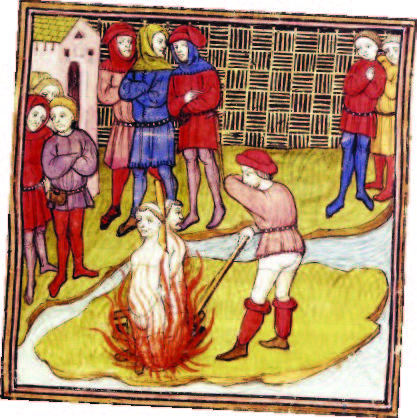
Upper Case Editorial
KNIGHT MOVES
Thanks primarily to the History Channel, the Knights Templar have become a hot topic in recent years. They were a sophisticated and wealthy religious military order that flourished during the Crusades. They built forts across Europe and the Holy Land, earning a reputation as a formidable fighting force and also establishing one of Europe’s earliest banking systems. After Jerusalem was lost, the Templars fell out of favor with the Catholic Church. Philip IV King of France, deeply in debt to the Templars, used this as an excuse to erase his debt by hunting the knights down and executing them as heretics. Through torture, he hoped to discover where their fortune was housed, but none of the Templars talked. Treasure hunters are still trying to find it today. Some believe it includes the chalice used by Jesus at the Last Supper, i.e. the Holy Grail of Arthurian legend. By the way, Philip launched his attack on the Knights Templar on Friday, October 13, 1307—which some believe is the reason Friday the 13th is considered “unlucky.”
Editor’s Note: One of our more entertaining Ancestry.com finds was that my wife is descended from Penelope Stout, who was famously tomahawked by natives and left for dead after her ship ran aground at Sandy Hook in 1643. She survived the ordeal, had 10 children, and one of her descendants, Betsy Stout, married the author of the golf story on page 59. Betsy’s mother sold us our house. Small world.
The talent pool in New Jersey runs deep.
By Gerry Strauss
Bruce. Shaq. Meryl. Brooke. Frank. Can any other state match New Jersey’s output of celebrities for whom “one name” says it all? More than anything, it’s a reflection of the talent pool this state produces year in and year out. There’s a little alchemy in play here—what propels young New Jerseyans toward the stratosphere is a curious combination of attitude, style and competitive spirit…and probably proximity to New York. The brass ring, as they say, is right there for the grabbing.
Who might be the Garden State’s next claim to fame? That, of course, is anyone’s guess. I checked in with five up-and-comers with New Jersey roots to understand a little better where they’ve come from…and how far they’re likely to go.

Photo by Justin Higuchi
Christina Grimmie
Singer
Five years before you blew people away on national television, you were a bona fide YouTube sensation. How did that go down?
It was never a planned thing. It wasn’t even something that I thought could ever blow up, because at the time I had no idea that YouTube had that kind of power. I was trying to make people happy by doing their requests. Someone would be like, “Oh, sing ‘Single Ladies’ by Beyoncé” and I’d just go ahead and do it.
What did your high finish on The Voice in 2014 do for your career?
I feel like people didn’t take me as seriously when I was just the “YouTube girl.” The Voice took me to a different level. As an artist and a performer, I learned so much. You get thrown on stage singing for a bunch of stars on national television, and you have to adapt and force yourself to learn how to perform under those conditions.
Where do you see your career headed from here?
I want to inspire people with a unique sound. I want to inspire people with my voice. I want to keep getting out music for people that want music from me. My life’s plan is really just to keep making music, no matter what.
Did You Know?
Christina, a native of Marlton, finished third on Season 6 of The Voice. In the live finale, she performed a duet with Adam Levine and sang the Elvis Presley hit “Can’t Help Falling In Love.”
 Alyssa Campanella
Alyssa Campanella
Fashion Blogger
Where did you first develop your sense of style?
I think it began from playing in my mom’s closet and reading her fashion magazines after she was done with them. I would borrow her clothes a lot…and sometimes never return them.
What were you like as a kid growing up in Manalapan?
I was a big, dorky homebody as a child. My backyard was a forest. Directly across the street was a big farm. If I wasn’t at school or with the drama club, I was at home with my nose in a book.
It was quite a leap from there to winning the Miss USA pageant in 2011.
Shortly after the crown was placed on my head and I started to walk the runway, my first thought was, “Everything is about to change.”
What was the most dramatic change?
I got to travel the world—to Brazil, the Bahamas, Canada, Monaco, France, and Germany. But I also changed a little after every charity appearance. For instance, I learned a lot about my own body while working for a few breast cancer awareness organizations.
Your fashion blog, the-A-List-blog.com has become a hit. What does it take to make that happen every day?
On the days that I am home, I wake up early and have breakfast before sitting at my desk to respond to emails. I then get dressed and begin to work on my next blog post, making sure all the links connect to the right web sites and all the images are clear and aligned properly. Sometimes, I’ll know right away what I want to talk about in my blog post. There are also days where I really have to think about what I want to say. Lunchtime is usually meeting time, since I always feel everyone is happier if there’s food. In the evenings, I tend to browse online for new trends and new products.
Did You Know?
Alyssa was the first runner-up in the 2007 Miss Teen USA pageant. The third runner-up, Caite Upton, earned everlasting fame for her rambling explanation of why one in five Americans couldn’t find their own country on a world map.
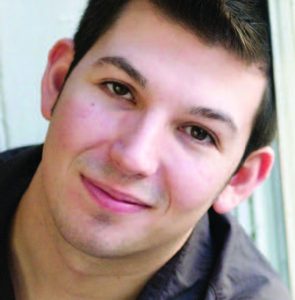 Stearns Matthews
Stearns Matthews
Cabaret Singer
Your work has a timeless quality to it. Do you consider yourself an old soul?
I don’t know if I’d call myself an old soul, necessarily, but I do sometimes find myself feeling like I was born a couple decades too late. I love music that existed before I did.
Where did you develop a love for cabaret performing?
I grew up in Morris County and was very close with a woman named Patty Montano. Patty taught cabaret classes for high school kids—which I took—and also for younger kids, whom I accompanied on piano. We had showcases at Don’t Tell Mama in New York, and that was my first experience singing in a club. I learned a ton from Patty, who passed in 2005. I still think of her whenever I step onto a cabaret stage.
You were a Music Theater major at Westminster Choir College in Princeton. What’s the most important thing you learned there?
A respect for the music on the page. An actor respects the punctuation a playwright puts into the text because the playwright obviously made decisions about where to put it for a reason. Music is the same way. Every detail is a little gift from the songwriter to the performer, and should be honored.
Do you feel this area offered the opportunities you needed to grow as a performer?
Definitely! My family moved from central Connecticut when I was 12. I often think how different my life and career would have been if we’d stayed there. The resources I had access to as a teenager and young adult living within an hour of New York City were invaluable. I’m definitely one of the lucky ones for living here.
Did You Know?
Stearns won Best Male Vocalist at the 2015 Manhattan Association of Cabarets & Clubs (aka MAC) Awards. If you buy his critically acclaimed CD Spark from stearnsmatthews.com, mention EDGE and he’ll sign it for you.
 Daria Berenato
Daria Berenato
The Jersey Devil
How did you get involved in Mixed Martial Arts?
I was a lifelong athlete, playing everything from lacrosse, basketball, track and soccer until my sophomore year at Seneca High School in Tabernacle. I decided to be more social and take some time off. Boy, was that a mistake! I missed being competitive and knew I had to find something to fill that void. I walked into a gym called Liberty Boxing and said, “I want to be an MMA fighter.” From that day on I knew what I wanted to do with my life.
What do people in your sport say when they find out you’re from Jersey?
They hear New Jersey and they think “city.” Well, I grew up in the beautiful Pine Barrens of South Jersey. My weekends consisted of riding my quad, going mudding in the woods, or just hanging out by a bonfire with my friends and family enjoying the outdoors. It was simple living, really.
You’ve fought inside the MMA cage, hosted TV shows, and are now pursuing a career with World Wrestling Entertainment. Is it challenging to juggle so many career paths?
I do wear a couple of hats. But in a strange way, they are very similar. They revolve around my love for entertaining people and competing. The day of my high school graduation I packed my car up and drove to Florida to continue my MMA training. Then I moved back to the northeast, produced a couple movies, and finally set my eyes on L.A.—which is where I began hosting my UFC Afterbuzz show. Acting and TV production were always interests of mine. I was always the class clown, always the one trying to make people laugh or do something crazy. So hosting came pretty naturally to me and it’s definitely something I love doing.
What is your ultimate goal?
Just to live it with no boundaries, no restrictions. I’m one of those people who truly believes anything is possible. Whether I’m fighting MMA, performing in the WWE, or hosting a TV show, I don’t believe there is a way you can ever “do it all.”
Did You Know?
Daria is the first openly gay female wrestler. She came out during the 2015 WWE Tough Enough reality competition.
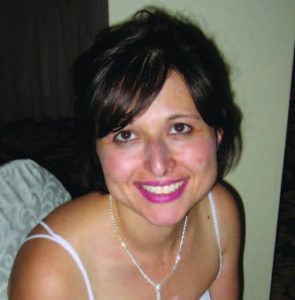 Margaret Gurevich
Margaret Gurevich
Chloe By Design Author
What appeals to you most about the Chloe character you created?
I’m not much of a fashionista, so I really welcomed the opportunity to learn about something new. What’s unique about the Chloe series is that the reader not only gets a story about a girl competing in a Project Runway-type contest, but they also see exactly what Chloe is sketching, thanks to the illustrations by Brooke Hagel.
Did growing up in Bergen County influence your writing?
Bergen County is known for its malls. As a kid, I loved walking through Garden State Plaza and people-watching. In the first and third Chloe books, I have Chloe in the mall, scoping out styles with her best friend. In my young adult novels, the characters always go to the mall, too. That’s my little tribute to New Jersey.
What ideas do you try convey to your middle-grades readers through Chloe?
What I love about her is that she has some confidence issues, but manages to persevere and follow her dreams. I hope this book empowers young girls to overcome obstacles and go after what they want.
Did You Know?
Margaret was born in Belarus and moved to New Jersey from Brooklyn at age 8. The third book in the Chloe series will be published in September.
Editor’s Note: Gerry Strauss actually planned to check in with six homegrown New Jersey up-and-comers. Unfortunately (for Gerry, that is) one of them—Charlie Puth—“blew up” in 2015 while he was working on this story.
A city of dreams is rising again.
By Yolanda Navarra Fleming
 If it’s been more than a year or two since you last jumped in the car and motored down to Asbury Park for a day (or summer weekend), you’re in for a pleasant surprise. After decades as a Jersey Shore ghost town, it has become a hip and happening summer destination in every conceivable sense of the word. The beach, the boardwalk and the city blocks radiating north and south from Cookman Avenue have been transformed. And the crowds are coming, from North Jersey by car and New York City by train, while sleek condos are going up as fast as buyers can sign on the dotted line. As a result, there is far more now to eat, buy, see and do in Asbury Park than anyone could conceivably handle in a day—dozens of places, both old and new. Which means a smart plan of attack is crucial. Build your day around a couple of these eateries and you won’t go wrong…
If it’s been more than a year or two since you last jumped in the car and motored down to Asbury Park for a day (or summer weekend), you’re in for a pleasant surprise. After decades as a Jersey Shore ghost town, it has become a hip and happening summer destination in every conceivable sense of the word. The beach, the boardwalk and the city blocks radiating north and south from Cookman Avenue have been transformed. And the crowds are coming, from North Jersey by car and New York City by train, while sleek condos are going up as fast as buyers can sign on the dotted line. As a result, there is far more now to eat, buy, see and do in Asbury Park than anyone could conceivably handle in a day—dozens of places, both old and new. Which means a smart plan of attack is crucial. Build your day around a couple of these eateries and you won’t go wrong…
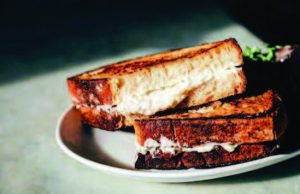 Pascale & Sabine, 601 Bangs Ave.
Pascale & Sabine, 601 Bangs Ave.
- A European brasserie beloved by finicky diners, complete with romantic ambiance and impeccable service.
- Favorites: Beef Tartare, Escargots, Coq au Vin, Salmon (with saffron soubise, baby mustard greens, kumquats and hazelnuts), Moules Frites, and Beignets.
 Taka, 660 Cookman Ave.
Taka, 660 Cookman Ave.
- Contemporary Japanese cuisine. The owner, Takahiro Hirai, is descended from a Samurai family.
- Favorites: Rolls galore, New York Strip in Miso Butter, Short Ribs, Tuna (sesame seed coated with red bean sauce), Green Tea Cheesecake and Mochi.
 Moonstruck, 517 Lake Ave.
Moonstruck, 517 Lake Ave.
Classic American-Mediterranean Grill with three floors of dining and music (often live), situated near Wesley Lake and Cookman Avenue.
Favorites: Filet Mignon, Rosemary Chicken, Walnut Crusted Rack of Lamb with Pomegranate Demi-glace and Lemon Risotto, Grilled Shrimp with Pesto Linguine.
 Dino’s on Main, 300 Main St.
Dino’s on Main, 300 Main St.
- Preservative-free, fresh and delicious prepared and made-to-order food served in a BYOB bistro with casual indoor and outdoor dining. Hot-spot for after-hours snacking and meals on weekends.
- Favorites: Linguine Oli Olio, Chicken Milanese, Mamma Pat’s Homemade Lasagna, Dino’s Famous Caesar Salad, Homemade Ravioli, Fresh Mozzarella and Bread baked daily on premises.
Belmonte’s Italian Restaurant, 632 Cookman Ave.
- Cozy, traditional BYOB eatery ideal for families.
- Favorites: Fried Calamari, Linguine and Clams, Pappardelle Roma (with shrimp, asparagus, mushrooms and basil in a pink sauce), Chicken Giovanni, Stuffed Pork Chop.
 Langosta Lounge, 1000 Ocean Ave. at Second Ave.
Langosta Lounge, 1000 Ocean Ave. at Second Ave.
- Bohemian boardwalk restaurant and bar serving up vacation fare from all over the globe. Custom cocktails, live music and casual vibe.
- Favorites: Bombay Chicken Salad Sandwich, Cuban Fried Olives, Lobster Sliders, Ono Salad, Vegetable and Goat Cheese Pizza with charred Brussels sprouts, basil cream and roasted grapes.
Jimmy’s, 1405 Asbury Ave.
- The Sardi’s of the Jersey Shore. Old-world Italian restaurant where Robert DeNiro and other Goodfellas dine when they’re in town.
- Favorites: Clams Casino, Linguine with Clam Sauce, Chicken Scarpariello (Fontina Cheese, roasted peppers in Francaise sauce), Sea Scallops with White Wine, addictive House Dressing.
Cuban Café, 1007 Memorial Drive
- Authentic Cuban comfort food served at breakfast, lunch and dinner, with indoor and outdoor seating. Daily specials and a children’s menu.
- Favorites: Cubanitos, Cuban Style Ground Beef, Oxtail Stew, Fricassee de Pollo, Levante Muerto Seafood Gumbo.
 Talula’s Pizza, 550 Cookman Ave.
Talula’s Pizza, 550 Cookman Ave.
- An artistic foodie hang for lunch, dinner, cocktails, and brunch. Brooklyn-inspired baked goods, wood-fired oven pizzas and plentiful vegan options.
- Favorites: Esquite Polenta Bowl, Talula’s Reuben with House-Made Pastrami, Temple III Pizza with Vegan Mozzarella, Cashew Ricotta and Vegan Pepperoni, Smoked Trout Toast, Milk and Honey Panna Cotta, Apple Cider Doughnuts.
Asbury Park Roastery, 1300 Ocean Ave.
- Small coffee roasting company opened on the boardwalk in 2007, specializing in fresh roasts, fair trade and organic beans, organic loose leaf teas, accessories and confections. Retail store at 803 Second Ave.
- Favorites: Red Eye Fresh-Roasted Coffee, Chai Tea Latte, Medium Brazil Poco Fundo Coffee, French Organic Indonesian Blend Coffee, Melon Flavored White Tea, Moroccan Mint Scented Green Tea.
 TOTALLY JUICED!
TOTALLY JUICED!
Juice Basin, 805 4th Ave.
- Divine cold press juice concoctions, all USDA organic. Owners Regina & Enrique (right), with Chef David Burke (center), are a fun married couple you may know from their Montclair store.
- Favorites: Cold-pressed juices, Cacao Love Smoothie (cacao, spinach, banana), Caribbean Nites Smoothie (mango, pineapple, banana, kale), Alkaline Green (kale cucumber, mint, parsley, ginger root, lime).
“Juice Basin has a quality of product that only comes from a perfectionist. The balance in these combinations of ingredients made me feel like I was in the hands of a master at work. I can’t wait to go back to Asbury Park to try more.”
—David Burke
SHOP ’TIL YOU DROP
Nita Ideas, 601 Cookman Ave.
Celebrated designer Nita Novy began as a Broadway actress, then designed hats and moved into couture and ready-to-wear designs. The New York Times says her collection “seems to breathe intangible femininity. It is almost as if the rest of the fashion universe is catching up with her.”
The Market at Fifth Avenue, 1300 Ocean Ave.
Multiple vendors under one roof, with artists and designers of everything from clothing and housewares to jewelry and gifts—including Sea & Green, Dusty Rose Vintage, Tessa Perlow, Alchemy Hour and Acdwsh.
 B&G Home Interiors, 658 Cookman Ave.
B&G Home Interiors, 658 Cookman Ave.
2015 “Best of Houzz” designer Jon Martinez is celebrating his second anniversary this summer. Eclectic accessories, gifts, framed artwork and a downstairs showroom featuring stylish sofas, arty end tables, wall hangings and rugs.
Glide Surf Co., 520 Bangs Ave.
Owners Phil and Jessica Browne display their affinity for the sand and surf in their alternative boutique, with surfboards, surf apparel, beach dresses and bikinis.
All Natural Products

CLEAN CONSCIENCE
Gifts for the Journey scented bar soap is handmade with all-natural ingredients by women survivors of trafficking and addiction in the United States. Available at thistlefarms.org.

REEL DEAL
Every purchase of Seafood Watch bamboo whale design coasters supports an organization dedicated to sustainable fishing.
Available at sukiscoop.com.

SNIFF TEST
Bath Affirmations floral bath salts are made with mineral-rich Dead Sea salt and myriad organic flowers. Available at trulyaesthetic.com.

SOMETHING WILD
GMO-free, cruelty-free and non-GMO Wild Man cologne is a woodsy, herbaceous highly concentrated botanical oil-based fragrance. Available at wildroseherbs.com.

CRUNCH TIME
The ultimate all-natural vegan snack basket includes truffles, olives and dark chocolate delicacies. Available at healthygourmetgifts.com.
Location, Location, Location

INTO THE WOODS
The Outdoorsman 7-in-1 belt clip includes a compass, thermometer, LED light and watch. Available at hammacher.com.
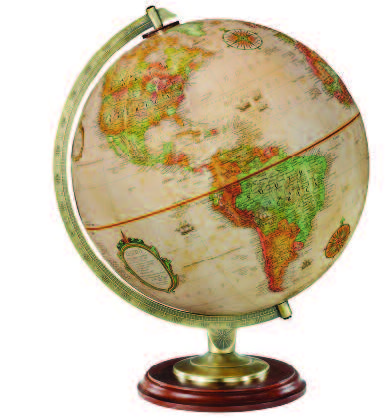
SPIN JOB
Kingston’s antique colored globe features raised relief and a walnut base. Available at ultimateglobes.com.

SURVIVAL MODE
The lightweight Paracord Grenade contains everything you need in a survival situation, including a
fire starter and fishing gear. Available at thereadystore.com.

FINDING YOURSELF
According to CNET, the easy-to-read Garmin Nuvi 50 ranks among the top new GPS devices of 2016. Available at garmin.com.

LEADER OF THE PACK
The Ortlieb GPS case holds a smartphone on your handlebar
bag so you won’t miss a turn. Available at therandonneeshop.com.
So what’s the deal with Solar?
By Erika Kemp and Stephen Smith
Uncle Mark gets at least five calls a week about free solar. “Hello, are you the homeowner? My name is Chris…I am calling to tell you about a great new program that can dramatically lower your energy bills.” Chris sounds like he’s calling from 10,000 miles away and he probably is. He is reading off a script. And there is no way his name is Chris.
For better or worse, this is the voice of solar in New Jersey—a state well-marinated in shams, scams and telemarketing schemes. So, needless to say, Chris won’t be selling Uncle Mark any solar today.
Which is a shame, because New Jersey is a very active solar market with more than 550 firms competing for new business. Indeed, the Garden State was an innovative and early adopter of solar power when it embraced its Renewable Portfolio Standard (RPS) policy in 2005. As a result, solar power in New Jersey is well understood and the market is mature in terms of cost efficiencies, competition amongst suppliers, and predictable return on investment for homeowners and businesses interested in going solar.
The state’s Solar Renewable Energy Program (SREC) in particular demonstrates New Jersey’s commitment to solar power. Basically, it says that every megawatt hour of energy produced by a Jersey-based solar system can be bought, sold or traded to another entity in the state for their use in complying with the state RPS, or their own corporate renewable energy goals.
As a result, New Jersey is the fourth-largest solar state market in the country.
The next time Chris (or one of his fellow telemarketers) interrupts dinner, you and Uncle Mark might want to give him the time of day. The industry is robust, the deals are appealing and the technology is solid. That being said, this is a significant financial decision. So before you go solar in 2016, consider the following 8 questions:
Why do I get so many calls from sketchy telemarketers offering me “free” solar?
Because “customer acquisition” is now the most expensive part of selling a residential solar system. It is hard to believe that solar firms find cold-calling to be an effective strategy for such a personal and significant investment. They are pushing to make sales with as little upfront investment as possible, hence the seemingly asinine telemarketing approach. Solar power equipment and labor costs have plummeted in the past 10 years; it is now more expensive and takes longer for a solar company to find and close a deal with a client than it is for the company to build the system. As a result, solar companies are pushing hard to source clients as cheaply and efficiently as possible.

www.istockphoto.com
Is solar worth it?
It is if you have high electricity rates—and electricity rates in New Jersey are higher than the majority of U.S states. This is one of the most expensive electrical utility markets in the northeast. Going solar helps homes offset high electricity bills by producing your own electricity and, in some cases, you can sell excess electricity generated back to the utility company using a methodology called “net-metering” (see question #7). For a fixed expense, residential solar customers have a predictable amount of electricity at a predictable cost during a time when the price of electricity has the potential to soar.
Generous state and federal tax credits also come into play. The federal Tax Investment Credit (ITC) that encourages solar and renewable energy investment has contributed massively to the growth of solar across the U.S. It provides a tax credit for homeowners and businesses that equals 30 percent of the total solar-system investment cost. The ITC was extended by Congress last December and is currently set to expire in 2023.
There is also a nice mix of state policies and utility incentives available to New Jersey businesses and homeowners. These include the aforementioned New Jersey Renewable Portfolio Standard, which mandates that 1 percent of energy produced in the state of NJ must come from solar power by 2028. This legislation is managed by the New
Jersey Board of Public Utilities (BPU), which ensures that New Jersey utilities comply by managing the rollout of residential, commercial and utility-scale solar generation programs across the state. Another is the Solar Renewable Energy Credits program, the primary vehicle the state has used to implement its RPS. Homeowners can register to sell the credits they get from owning an operating solar system in New Jersey to companies that aggregate and then sell them off. Finally, check with your local utility for Utility-Specific Incentive Programs being offered current and prospective customers for going solar.

www.istockphoto.com
Are all solar companies basically the same?
No. In fact, there are three distinct types—third-party system owners, building contractor firms, and solar installers—and it’s important to understand the pros and cons of working with each.
Third Party System Owners are larger companies like Verengo, SunRun and SolarCity. They offer people various financing options, including leases and loans (in addition to installation services). The name of this category stems from the fact that you do not own the system on your roof. These are the calls you get when you’re sitting down to dinner. Interestingly, there’s not a state in the U.S. with more third-party party owned systems than New Jersey. The rapid reduction in the price tag of residential solar systems since around 2010 has weakened the appeal of these deals somewhat. However, if you don’t have the cash, this may be the most affordable route to going solar.

www.istockphoto.com
Building contractor firms are smaller, contractor-based firms specializing in general construction, electrical work or roofing work that now also offer solar installation services. To compete with larger finance firms, building contractors typically partner with a lender to offer options to homeowners who are looking to finance. But they also offer systems for outright purchase. They are typically regionally focused and can offer more personalized customer service than the larger companies. You are unlikely to receive cold calls from these companies—they tend to rely on referrals and traditional advertising.
Solar installation firms are strictly installers of solar systems. They have similar qualities to building contractors, but are more likely to have the best overall understanding of solar equipment performance. They have connections with established contractors who can handle any roofing or electrical infrastructure needs demanded by a project. The personal service and attention a smaller installer offers is the polar opposite of the cold-call experience. One disadvantage of working with smaller installers, however, is that they may be unable to offer a diversity of brands and equipment because of exclusivity agreements they could have with a manufacturer.
What are the must-ask questions I need answered by an installer before I sign up for solar?
- Do you have the electrical license required? Is your contractor license current?
- Can you demonstrate experience with similar residential solar projects, as well as with the equipment you are proposing for my roof?
- With whom have you worked locally? A good installer should be able to supply you with a name and phone number…even better, a visit with the homeowner. References matter.
- Where are your components—specifically your modules and solar inverters—manufactured? Solar power component manufacturing is an international business. Installers offer products from Asia, Europe and the Americas, typically, and there are differences in certain equipment that result in varied pricing. If buying equipment made in the U.S. is important to you, ask the installer what American-made options are available for you.
- What kind of warranties do you offer for workmanship and for components? Each solar system is different. Solar module warranties should run 20 years at a minimum and most solar inverter warranties are now 10 years. A solar inverter allows the modules to be installed in less-than-optimal (i.e., shady) conditions and still generate plenty of power.
- Be sure to ask about the equipment and workmanship warranties, as well as whether any planned or unplanned maintenance is included in the contract.
- Who handles operations and maintenance, how frequently and for how long? Your installer should show you an “O&M” plan, complete with module cleaning and a routine maintenance schedule, along with various service packages for system maintenance. There shouldn’t be much needed, as solar systems essentially have no moving parts. In the case of third-party owned systems, all maintenance is performed by the third party. As with any other investment and/or home improvement, it is important to get multiple bids and compare them before selecting an installer.
Will this technology become obsolete in a couple of years, like my computer and my cell phone?
No. The product cycle time for solar components is actually quite long, so it’s likely you’re getting up-to-date components. Solar equipment technology has not evolved significantly in the past few years, which is a good thing for consumers because it has allowed banks, system owners, installers and manufacturers to develop a detailed understanding of how systems work and produce energy. This helped a maturing of their perspectives on solar power without the additional need of analyzing significant technological changes at the same time. The development of smaller micro-inverters for the residential market is probably the biggest development for residential and smaller commercial systems in the past five years. Micro-inverter companies are established enough to be well understood by installers, and manufacturers offer warranty terms equaling those of traditional inverter manufacturers.
How are people financing these systems if they can’t afford the cash outlay?
Even though system prices have dropped, solar leases are still popular. Leasing a system is a good option to go solar without any upfront costs, however, be aware that the system is owned by the leasing company—which means it gets the ITC and incentive benefits, not you. Even so, solar financing is big business in New Jersey. Personal loans and home equity loans are always options. Since system costs have declined, you may want to reach out to your bank and price out a loan or home equity line to finance your purchase. That way you receive all the incentives and tax benefits. Or you could put it on plastic.
Consult your accountant (or Google around) to better understand how to consider the ITC tax benefits relevant to your personal tax situation. And, of course, make sure to ask to see all the financing and contract terms before agreeing to anything. Some companies ask buyers to sign on the dotted line through email or web-based signatures before sharing the financial details. Better to deflect the commitment and make sure you understand the small print beforehand.

www.istockphoto.com
If I generate more power than I use, how can I sell it?
Net Metering is the general term used to explain how system owners can sell power to utilities. Essentially, signing a net metering contract with your utility means your utility will purchase back the same amount of energy you use, for the same price it sells you that energy. Energy production beyond this amount doesn’t receive any credit from the utility, so it is important to size your system correctly with your installer’s help and guidance.
How do I know I’m getting the best deal for my system?
Hey, this is New Jersey. There’s nothing wrong with squeezing the installer a little! Let the company know you are looking at multiple bids. This may bring the price down, but it also creates an opportunity to explain what is different/better about the products and service the seller is offering. Remember that there are lots of options available to install your solar system, and it’s a long-term investment, so don’t compromise on what you want out of the deal.
It is also helpful to know your average monthly and annual usage before you enter into conversations with installers. This shows them you know what you are doing, and will make them more accountable to you during the entire sales process. Finally, ask about product options and warranty terms when meeting your installer. Showing a little knowledge of the primary system components— modules and inverters, for instance—and asking the installer to explain warranty terms can help you form a good comparison between products and position yourself well for the price and terms negotiations. Knowledge is power in the hands of the solar client.
The take-away here is that, for New Jerseyans, this looks to be a smart time to go solar. This is one of the most mature and healthiest solar markets in the nation. The current prices for solar power—combined with newly renewed federal and state incentives—means the return on investment for a solar system in the Garden State has never been higher. In addition, utilities and permit agencies in New Jersey are very familiar with the regulations and requirements governing solar power installations, which further drives down the non-system costs associated with going solar. And, as mentioned earlier, technological advances are occurring at a stable, consistent rate, allowing financers and installers to thoroughly understand solar power technology.
So are these telemarketers on the level?
They almost certainly are. If you hear them out, they are likely to set up a call with someone more skilled and informative. The reason you are not talking to these folks first is just a matter of economics. That being said, a solar system is an expensive and complicated electrical appliance you are attaching to the roof of your home. It would be nice to feel like that first contact was a solar expert but, as Uncle Mark is so painfully aware, it’s not.
THREE FOR THE MONEY
Third Party System Owners
PROS
- Responsible for maintenance
- Low or no upfront capital cost
- Low risk
CONS
- Typically higher system pricing for financed systems
- No ITC
- Fixed contract
- Monthly payment
- Typically not local
- Less local customer service
Building Contractors
PROS
- Local focus
- Good customer service
- Competitive pricing
- Experience with solar and roofing
CONS
- Less competitive financing options
- Limited product offerings
Solar Installers
PROS
- High competition, good pricing
- Lots of solar experience
- Local focus
CONS
- Can be tied to specific product or finance partners
- Less experience with specialized construction needs

www.istockphoto.com
Editor’s Note: Erika Kemp and Stephen Smith are the co-owners of Solvida Energy Group (solvidaenergy.com), a consulting firm that analyzes solar market technical and industry trends. They are also “newly solar” homeowners, having opted to purchase their own system, and are frequent visitors to one of the first solar-powered homes on the Jersey shore. Special thanks to Scott Moscowitz, Director at GTM Research in Boston, who provided valuable insight to the current state of solar in the Garden State.
Happy holidays in Japan & Taiwan
By Sarah Rossbach
Wherever I travel, I cherish that feeling of being transported in time and place to experience a historic site as the ancients did. When in Versailles, I imagine Marie Antoinette is frolicking as a milkmaid in her hameau. In London, I picture Sir John Soanes at his desk gazing at a roman plinth as he designs the Bank of England. In Kyoto garden, I envision the fictional Prince Genji courting Lady Murasaki with a clever cherry-blossom-inspired haiku. Which is why I am so utterly irritated by the busloads of selfie-stick-toting tourists who interrupt my carefully curated daydreams. My solution? Travel during Christmas
And not to Aspen, Park City, Gstaad, St. Moritz, Hawaii, the Caribbean or other traditional winter holiday destinations. This past December, we took our family vacation in Japan and Taiwan, two fascinating countries that can be completely booked-up during the height of their tourist seasons. Japan, for example, is impossible during its more temperate fall—with the brilliant colors for autumn leaf-watchers—and in spring, too, when it’s overrun with tourists elbowing their way between the plum and cherry tree blossoms. At many of the popular historic sites in Taiwan, visitors find themselves unable to secure tour reservations during the high seasons. These situations are unlikely to change. Right now, the US dollar enjoys a favorable exchange rate with both the Japanese yen and the new Taiwan dollar; taxis and mass transit are 50% less expensive than in the West, making both countries vastly more affordable than, say, England or France
Eschewing the yearly wrestling match with the Christmas tree, the added pounds from holiday parties and the challenge to find that perfect present for each and every member of the family, my husband and I boarded a flight with our son to Tokyo a week before Christmas. The planning for this trip began when our daughter, who is teaching English in Taiwan for a year, announced that she would not have the opportunity to return to New Jersey for the holidays
Flying halfway around the world isn’t an easy endeavor. Having done so on a number of occasions, there are some rules I try to follow. If you can save up your airline points, try to upgrade to an economy-plus or, even better, a business class seat. Also, try to arrive in the late afternoon so you can go to bed early and get on a local sleep schedule. Pre-purchase a Japan Rail Pass in the US so that, when you arrive at Narita Airport, you only have to pick up your tickets to the hour-long direct train ride to Tokyo. Before any train trip, we pre-booked our assigned seats at Tokyo Station.

All photos by Sarah Rossbach
TOKYO IN 36 HOURS
Our stay in Japan’s largest city was meant to be short, less than two days. We chose the Palace Hotel, located in the middle of the city (a convenient 10-minute walk from Tokyo Train Station) and overlooking the Emperor’s 1.3 square mile park-like estate. This neighborhood, known as Marunouchi, is Tokyo’s financial district, so it’s quieter and less busy during the weekend and in the evenings. As a result, it was easy to book a table for dinner near our hotel. In much of modern Tokyo, restaurants are not at street level; thanks to the guidance of our hotel’s concierge, we enjoyed amazing sushi on the 35th floor, steaming ramen on the 6th floor and $10 soba on the 7th floor of various local office/vertical shopping mall buildings. Of course, western restaurants exist. Yet the food loses something in translation. Case in point was brunch the next day at my favorite French bakery chain, Maison Kaiser. There were only three weird choices: beef mushroom soup, sliced beef or beef in a chef’s salad
Our time being short, we hired a guide for the afternoon to take us on a Tokyo version of speed-dating. Our guide, Mariko Okunishi, directed us through the city’s excellent (and clean!) subway system to the Meiji Shrine, Neju Museum and Garden, Harajuku Street—a young people’s area where women dressed like little western girls (which I really didn’t need to see)—Shibuya Crossing, the busiest crossroad in the world, and the Ginza aka Tokyo’s Fifth Avenue. The constraints of time and jet-lag prevented us from visiting the 7th century Asakusa Buddhist Temple and various museums devoted to bonsai, Japanese woodcuts and our son’s passion, Anime
The 95-year-old Meiji Shrine is dedicated to the Meiji Emperor and Empress and embodies the traditional Shinto worship of nature. It is a living monument, as locals celebrate weddings and children’s “coming of age” celebrations at 30 days, three, five and seven years. At the entrance to the park are troughs of water and ladles to clean and purify yourself (i.e. wash your hands). The shrine and its 170-acre park was the highlight of our day.
 AH, KYOTO
AH, KYOTO
Kyoto is a two-and-a-half-hour ride on a super-clean bullet train from Tokyo. We were smart and arrived early at the station to get the lay of the land; we had to query a handful of uniformed workers before locating our platform. We knew to request a seat on the right side of the train in order to catch a glimpse of Mt. Fuji. While Tokyo has been Japan’s capital since 1868, Kyoto was the seat of power in Japan for over 1,000 years and, as such, offers a stunning breadth and depth of historical and cultural sites. Whenever Kyoto is mentioned, the Japanese sigh and say, “Ah Kyoto”—no doubt invoked by romantic images of parasol-toting Geishas strolling by cherry blossoms in spring and vibrant red Japanese maple leaves in autumn
That being said, as we stepped off the train, I was struck by how much Kyoto, like Tokyo and New York, is a modern city. Japanese sensibility still can be found at Buddhist temples and Shinto shrines, as well as gardens, preserved palaces and museums. Kyoto boasts over 2,000 temples and shrines, ranging from ones designated as World Heritage Sites to mini sidewalk altars. To immerse ourselves further in Kyoto’s culture, we splurged a bit and stayed at a ryokan, a traditional Japanese inn, where guests sleep on futons in tatami rooms and dine on nine-course kaiseki meals for dinner and breakfast, presented by uber-polite kimono-clad servers. While the quality of these inns can vary, our stay at the Yoshikawa Inn was very comfortable, warm and dry on a cold and rainy day. It was a highlight of our five days in Japan.
 Though lighter in December, tourism at Kyoto’s top attractions is a year-round business. To beat the Chinese tourist buses, we rose early and visited the Kinkaku-ji Golden Temple (page 13), a very gold Buddhist temple. In concept, it dates back to 1398. But in fact it is a 1950s replica of the original, which was burned by a deranged monk. Another wonderful site is the Kiyomizu-dera Temple (left), founded in 778 and built in the 17th century with joinery (no nails) on a hillside overlooking Kyoto. While it is a Buddhist temple, Shinto shrines dot the grounds to “protect” the wooden temple from fire. Visitors often seek blessings and good fortune; they can drink from a spring-fed waterfall that is said to have wish-granting powers, leave petitions to the gods, or purchase good luck talismans. A former practice (fueled by the belief that anyone who survived a 13-foot jump from the temple veranda would have wishes fulfilled) wisely is prohibited now.
Though lighter in December, tourism at Kyoto’s top attractions is a year-round business. To beat the Chinese tourist buses, we rose early and visited the Kinkaku-ji Golden Temple (page 13), a very gold Buddhist temple. In concept, it dates back to 1398. But in fact it is a 1950s replica of the original, which was burned by a deranged monk. Another wonderful site is the Kiyomizu-dera Temple (left), founded in 778 and built in the 17th century with joinery (no nails) on a hillside overlooking Kyoto. While it is a Buddhist temple, Shinto shrines dot the grounds to “protect” the wooden temple from fire. Visitors often seek blessings and good fortune; they can drink from a spring-fed waterfall that is said to have wish-granting powers, leave petitions to the gods, or purchase good luck talismans. A former practice (fueled by the belief that anyone who survived a 13-foot jump from the temple veranda would have wishes fulfilled) wisely is prohibited now.
Surrounded by two moats, the Nijo Castle, the former Shogun’s home, is definitely worth a visit. The castle floors were built to squeak on purpose—as an early form of burglar alarm called “nightingales”—alerting the Shogun of assassins. The 400-year-old Nishiki market is also a fun typical Japanese destination. Its neat, colorful stalls selling everything from matcha to mocha (tea to rice cakes), sushi to sake, and pickles to dried fish. If you enjoy gardens, take a trolley to the Arashiyama area to visit Tenryu-ji, a Zen Temple with a tunnel-like bamboo grove leading to Okochi Villa, a beautiful garden designed by film star Denjiro Okochi. Across the river is a park full of wild but people-friendly monkeys.
Unfortunately, we did not make it to Nara, the capital city of the neighboring prefecture to Kyoto. It boasts some of the best examples of Tang Dynasty Chinese (yes, Chinese!) temple architecture. However, our next stop, Taiwan—a four-hour plane ride from Tokyo—would offer many outstanding examples of Chinese dynastic art and architecture.
 ON TO TAIWAN
ON TO TAIWAN
The island nation of Taiwan, home to 23 million people, was known for centuries to the west as Formosa, or beautiful island in Portuguese, a name bestowed upon it by 16th century sailors. In the ensuing years, Taiwan’s indigenous people were pushed to the margins by Han Chinese, who now make up more than 95 percent of the population. In 1949, Chiang Kai-shek fled to Taiwan after losing a civil war on mainland China to Mao’s Communist forces. The island has been known officially as the Republic of China ever since. While increasingly proud of its native Taiwanese culture, Taiwan offers fantastic Chinese food, temples and works of art—some would say the best in the world. Taipei, Taiwan’s capital, has emerged as one of the most vibrant cities in Asia. It is clean, relatively safe, has reliable and inexpensive transportation, great food and a vibrant nightlife. The Taiwanese demeanor strikes me as a pleasant, modern mixture of traditional Chinese and Japanese politeness. And because Taiwan is still perceived by much of the world as an electronics producing nation, it refreshingly isn’t on everyone’s tourist destination list. Yet
 We arrived in Taipei on Christmas and, happy to forego our traditional heavy Christmas dinner, we dined at James Kitchen, an informal and quirky Taiwanese restaurant a local friend had recommended. Our taxi dropped us off on winding Yongkang Street, which is lined with hip shops and restaurants, and we entered a narrow building cramped with diners. The owner led us past the kitchen, up rickety steps to a tatami room, with customers’ drawings covering every inch of the walls and ceilings so low I couldn’t stand up. Seated on cushions at our low table, we enjoyed mushroom dumplings, pork lard rice, sautéed vegetables and the fish that James Kitchen is known for. Our check was about $15 per person
We arrived in Taipei on Christmas and, happy to forego our traditional heavy Christmas dinner, we dined at James Kitchen, an informal and quirky Taiwanese restaurant a local friend had recommended. Our taxi dropped us off on winding Yongkang Street, which is lined with hip shops and restaurants, and we entered a narrow building cramped with diners. The owner led us past the kitchen, up rickety steps to a tatami room, with customers’ drawings covering every inch of the walls and ceilings so low I couldn’t stand up. Seated on cushions at our low table, we enjoyed mushroom dumplings, pork lard rice, sautéed vegetables and the fish that James Kitchen is known for. Our check was about $15 per person
Much of Taipei is very modern but, as we had in Japan, we sought out the traditional and cultural. One of our first stops was the Lungshan Temple (above). Originally built in 1738, the temple still serves as a local Buddhist center where people come to pray. Along the alley leading to the temple, we entered a simple vegetarian noodle stall, favored by monks, to enjoy soup noodles and dumplings for about $3 per person
If you are adventurous and don’t mind street food and street ambiance, you can get delicious, healthy food fast and cheap. For instance, at a stall near a university, bowls of perfectly prepared cold sesame noodles topped with shredded cucumber came to $1 per person. Even at the wonderful and popular Taiwanese dumpling chain Din Tai Fung, the check for beer and more than enough steamed soup buns and dumplings to fill five adults totaled $60. The bill for a yummy hotpot dinner of fresh vegetables and sliced beef was about $15 a head. Taiwan also has expensive and upscale restaurants. Some can be found in department stores and hotels, including our hotel, Le Meridian. So after enjoying wonderful inexpensive meals, I treated our family to Cantonese food at My Humble House. Its name is something of a deception, as nothing at the restaurant—from the food to the décor—is humble. Delicious, yes. Humble, no. The service was swift and professional and I am still dreaming of the shrimp dim sum and the barbecued pork, buttery moist pork with a crispy skin—sort of a yin-yang of textures. While you can splurge on expensive eight-course meals, our bill for an a la carte dinner at this top restaurant came to a reasonable $135 for four people.
To get a sense of Taiwanese culture, a friend who lives locally took us to Di Hua Street, the oldest street in Taipei, to view shops selling tea, ceramics, fabric and Chinese medicine. With a few structures dating back to the era of Dutch rule in the mid-1600s, much of the historic architecture has been restored without displacing local businesses. We spent the afternoon wandering through a traditional Taiwanese district with narrow streets, local shoppers and 19th century buildings still in the hands of the original families
If Taipei is your only stop in Taiwan, you still can enjoy scenery and hiking, be it in the city’s vast botanical garden, a steep climb up Elephant Mountain, or a trek up the more challenging Yang Ming Mountain. A bit further away (daytrip distance) is Taroko Gorge, with its hiking trails and rope bridges, Yilan’s hot springs, and beautiful Sun Moon Lake
 To my mind, the most compelling reason to visit Taipei is to view the world’s finest collection of Chinese art at the National Palace Museum just north of the city. How did these treasures land in Taiwan? When Chiang Kai-shek made his speedy exit from China, he and his KMT (Kuomingtang) troops had time to cart away crates of nearly 700,000 exceptional works of art formerly owned by millennia of emperors. Here the peerless imperial treasures—jades, Neolithic bronzes, porcelains, painting and calligraphy scrolls, jeweled mystery boxes—are exhibited with clear explanations in Chinese, Japanese and English. With exhibits rotating several times in a year, it would take over 30 years to display the entire collection. On our visit, we saw rare jade carvings, fine Song Dynasty celadon porcelains and stunning bird, animal and flower paintings by Giuseppe Castiglione—an 18th century Jesuit priest who began his stay in China as an Italian missionary. Castiglione became a trusted Imperial court painter who also created portraits of the Empress and Emperor during the height of the Qing Dynasty
To my mind, the most compelling reason to visit Taipei is to view the world’s finest collection of Chinese art at the National Palace Museum just north of the city. How did these treasures land in Taiwan? When Chiang Kai-shek made his speedy exit from China, he and his KMT (Kuomingtang) troops had time to cart away crates of nearly 700,000 exceptional works of art formerly owned by millennia of emperors. Here the peerless imperial treasures—jades, Neolithic bronzes, porcelains, painting and calligraphy scrolls, jeweled mystery boxes—are exhibited with clear explanations in Chinese, Japanese and English. With exhibits rotating several times in a year, it would take over 30 years to display the entire collection. On our visit, we saw rare jade carvings, fine Song Dynasty celadon porcelains and stunning bird, animal and flower paintings by Giuseppe Castiglione—an 18th century Jesuit priest who began his stay in China as an Italian missionary. Castiglione became a trusted Imperial court painter who also created portraits of the Empress and Emperor during the height of the Qing Dynasty
As a student studying Chinese in Taiwan, the National Palace Museum was my favorite destination and it was as quiet as a library. Today, busloads of Chinese and Korean visitors crowd exhibits. The locals typically wait until Friday and Saturday evenings, when the crowds disappear and they can visit the museum free
 The ancient Chinese have a proverb: “Walking 10,000 miles is better than reading 10,000 books.” When visiting any foreign country, we learn a great deal experiencing firsthand its scenery, sites, food and people. During our five-day stay in Taiwan, I noticed something that I had been blind to when I lived there as a student many decades ago. I was struck by how polite, kind and helpful local strangers were to us and to each other. Whether at Christmas or anytime of the year (except hot, humid typhoon months of July and August) visiting Taiwan is a lovely experience
The ancient Chinese have a proverb: “Walking 10,000 miles is better than reading 10,000 books.” When visiting any foreign country, we learn a great deal experiencing firsthand its scenery, sites, food and people. During our five-day stay in Taiwan, I noticed something that I had been blind to when I lived there as a student many decades ago. I was struck by how polite, kind and helpful local strangers were to us and to each other. Whether at Christmas or anytime of the year (except hot, humid typhoon months of July and August) visiting Taiwan is a lovely experience
 GEISHAS, GEISHAS EVERYWHERE
GEISHAS, GEISHAS EVERYWHERE
Alas, few of them are real…or even speak Japanese. Kyoto’s Geisha costume stores and rental shops do brisk business by the busload with young Chinese women, who mince along the winding temple paths or through the narrow streets of the historic Geisha districts. After weaving through scores of ersatz Geisha girls, we finally bumped into the “real deal,” along with her retinue, in the Gion district, best known as a filming location in the movie Memoirs of a Geisha.
EDGE takes you inside the area’s most creative kitchens.
 Paragon Tap & Table • Korean BBQ Pork
Paragon Tap & Table • Korean BBQ Pork
77 Central Ave. • CLARK
(732) 931-1776 • paragonnj.com
At Paragon Tap and Table we feature as many cultures of cuisine as we feature regions of craft beer. This Korean BBQ Pork is served on soba noodle cake with tempura fried scallion. It’s one of the many dishes that is featured on the spring menu. I change the menu seasonally, while keeping a strong variety of our customers’ favorites.
— Eric B. LeVine, Chef/Partner
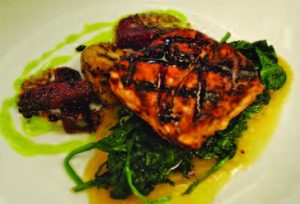 BoulevardFive72 • Grilled “Chermoula” Organic Salmon
BoulevardFive72 • Grilled “Chermoula” Organic Salmon
572 Boulevard • KENILWORTH
(908) 709-1200 • boulevardfive72.com
This Mediterranean-inspired, signature dish is served with fingerling potatoes, roasted golden-beet puree and a whole grain mustard sauce. The Salmon is sourced from the North Atlantic’s Faroese Island Fiords by Boulevard’s own seafood company.
— Scott Snyder, Chef/Owner
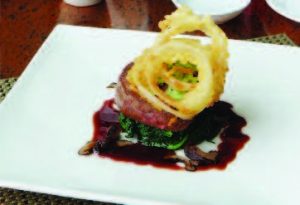 Arirang Hibachi Steakhouse • Wasabi Crusted Filet Mignon
Arirang Hibachi Steakhouse • Wasabi Crusted Filet Mignon
1230 Route 22 West • MOUNTAINSIDE
(908) 518-9733 • partyonthegrill.com
We prepare a crusted 8-ounce filet mignon served with gingered spinach, shitake mushrooms, and a tempura onion ring.
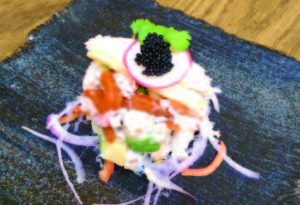 Daimatsu • Crab Avocado Salad
Daimatsu • Crab Avocado Salad
860 Mountain Ave. • MOUNTAINSIDE
(908) 233-7888 • daimatsusushibar.com
One of my favorite creations—I prepare something different every week—Crab Avocado Salad features snow crab, chipotle jelly, avocado, cilantro, lime soy dressing with yuzu citrus foam and caviar on top.
— Momo, Chef
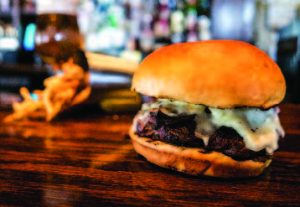 Publick House • Publick Burger
Publick House • Publick Burger
899 Mountain Ave. • MOUNTAINSIDE
(908) 233-2355 • publickhousenj.com
A great burger is a combination of many things. It starts with the patty, our house blend of chuck, brisket, and shortrib, which is grilled to temperature. Topped with caramelized onions, crispy applewood smoked bacon, and perfectly melted white cheddar, sandwiched between a lightly charred brioche bun. Served with double fried, house cut French fries. The Publick Burger is always the perfect meal.
— Bernie Goncalves, Owner
 Luciano’s Ristorante & Lounge • Handmade Cavatellini
Luciano’s Ristorante & Lounge • Handmade Cavatellini
1579 Main Street • RAHWAY
(732) 815-1200 • lucianosristorante.com
At the restaurant our main goal is to give our guest a pleasurably dining experience with fresh ingredients and personable service, in beautiful Tuscan décor accompanied with our fireplaces which are available for dining and private parties of all types. Our menus are seasonal influence to what is available in the market from food, wine, and cocktails. Our handmade Cavatellini with crumbled sweet sausage, shaved broccoli rabe, and broccoli rabe and pine nut pesto is topped with fresh ricotta and shaved Parmesan.
— Joseph Mastrella, Executive Chef/Partner
 Morris Tap & Grill • Shrimp Crepes
Morris Tap & Grill • Shrimp Crepes
500 Route 10 West • RANDOLPH
(973) 891-1776 • morristapandgrill.com
At Morris Tap and Grill, I am always looking to share seasonal dishes that reflect local flavor and creativity. Our Shrimp Crepes feature local vegetables blended to make this light and refreshing dish an instant favorite for our guests.
— Eric B LeVine, Chef/Partner
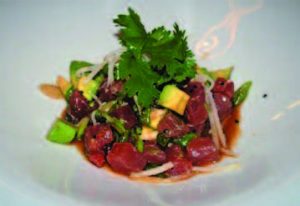 Boulevard Seafood Company • Yellowfin Tuna Poke
Boulevard Seafood Company • Yellowfin Tuna Poke
49 West Main Street • SOMERVILLE
(908) 722-0600 • boulevardseafoodcompany.com
Diced sushi-quality tuna tossed in sesame-soy chili dressing, with avocado, jicama and sugar snap peas. One example of the dishes we prepare using seafood that we bring in daily to our retail market, which is located on the restaurant premises.
— Scott Snyder, Chef/Owner
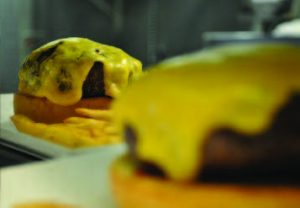 Spirit: Social Eatery and Bar • Double Cheddar Infused Burger
Spirit: Social Eatery and Bar • Double Cheddar Infused Burger
250 Morris Ave. • SPRINGFIELD
(973) 258-1600 • mclynns.com
It doesn’t get better then a double cheddar infused burger from the new Spirit: Social Eatery and Bar.
— Mark Houlker, Chef
 Arirang Hibachi Steakhouse • Volcano Roll
Arirang Hibachi Steakhouse • Volcano Roll
23A Nelson Avenue • STATEN ISLAND, NY
(718) 966-9600 • partyonthegrill.com
Hot-out-of-the-oven, crab, avocado and cream cheese rolled up and topped with a mild spicy scallop salad.
 Galloping Hill Caterers
Galloping Hill Caterers
Galloping Hill Road and Chestnut Street • UNION
(908) 686-2683 • gallopinghillcaterers.com
Galloping Hill Caterers has been an incredible landmark for nearly sixty years. We pride ourselves in delivering “over the top” cuisine, impeccable service and outstanding attention to detail. That is the hallmark of our success! Simply, an unforgettable experience. Pictured here is one of our crepes flambé that really creates lots of excitement!
 The Manor • Seared Atlantic Salmon with Almond Couscous
The Manor • Seared Atlantic Salmon with Almond Couscous
111 Prospect Avenue • WEST ORANGE
(973) 731-2360 • themanorrestaurant.com
Fresh and light, this seared Atlantic salmon with almond couscous, asparagus tips, and a roasted tomato beurre blanc is full of bright, rich flavors. Our range of creative contemporary cuisine offered alongside classic Manor favorites ensures that every guest can find something special on their next visit.
— Mario Russo, Chef de Cuisine
We welcome the community to our programs that are designed to educate and inform. Programs are subject to change.
SEMINARS
The seminar schedule is suspended for the summer months and will resume after Labor Day.
TCCC SUPPORT GROUPS
Conference Room A or Conference Room B
Trinitas Comprehensive Cancer Center
225 Williamson Street, Elizabeth New Jersey 07207
All events take place from 1pm to 3pm.
Call (908) 994-8535 for 2016 schedule.
Living with Cancer
Viviendo con Cáncer, Grupo De Apoyo
Living with Breast Cancer
Viviendo con Cáncer de Mama
Caregiving Support Group
Viviendo con Cáncer, Grupo De Apoyo
Viviendo con Cáncer, Apoyo Familiar
For more information on any TCCC support programs and to RSVP, please contact Roxanne Ruiz-Adams, LSW, (908) 994-8535. Por favor llame al (908) 994-8535 para confirmar su asistencia.
SPECIAL PROGRAMS
Health Services with Women In Mind
Trinitas helps provide women access to vital health services with a focus on preventive measures. These include educational programs and cancer screenings. Programs offered in English and Spanish.
To learn more about these services, contact Amparo Aguirre, (908) 994-8244 or at amaguirre@trinitas.org
Ask the Pharmacist:
Medication Management
Free of charge, by appointment only.
Monthly on the 4th Tuesday, 11:30 am – 1:00 pm
Call (908) 994-5237
TRINITAS HEALTH FOUNDATION EVENTS
THURSDAY, JUNE 16
8th Annual Andrew H. Campbell Sporting Clays Tournament
Hudson Farm Club, Andover, NJ
MONDAY, SEPTEMBER 12
Annual Golf Classic & Spa Day
Echo Lake Country Club, Westfield, NJ
For more information about the Foundation or to learn more about its fundraising events, (908) 994-8249 or lciraco@trinitas.org.
Proceeds from these and other events benefit the patients of Trinitas Regional Medical Center. Making reservations for Foundation events is fast and easy on your American Express, MasterCard, Visa or Discover card!
MEDICAL AND BEHAVIORAL HEALTH SUPPORT GROUPS
Diabetes Management Support Group
Monthly, First Monday, 2:00 – 3:00 pm
Kathleen McCarthy, RN, CDE (Certified Diabetes Educator)
Open to both diabetics and non-diabetics who want to learn more about diabetes prevention.
65 Jefferson Street, 2nd Floor, Elizabeth, New Jersey Call (908) 994-5502 for further information or registration
Sleep Disorders
If you or someone you know experiences problems sleeping, consider contacting the Trinitas Comprehensive Sleep Disorders Center in Elizabeth. Another location can be found in Cranford at Homewood Suites by Hilton with easy access on and off the Garden State Parkway. Both centers are headed by a medical director who is board certified in sleep medicine, internal medicine, pulmonary medicine, and intensive care medicine, and is staffed by seven certified sleep technologists.
For further information, call (908) 994-8694 to learn more about the Trinitas Comprehensive Sleep Disorders Center or visit www.njsleepdisorderscenter.org
Narcotics Anonymous
Monday 7:00 – 8:30 pm
Sunday 12:00 noon – 2:00 pm; Sunday 5:00 – 6:30 pm
Jean Grady, Community Liaison, (908) 994-7438 Grassmann Hall, 655 East Jersey St., Elizabeth
Alcoholics Anonymous
Friday 7:30 pm – 8:45 pm
Jean Grady, Community Liaison, (908) 994-7438 Grassmann Hall, 655 East Jersey St., Elizabeth
HIV Education and Support Program
for HIV Positive Patients
Monthly. Call for scheduled dates/times.
Judy Lacinak, (908) 994-7605
Early Intervention Program Clinic, 655 Livingston St. Monastery Building, 2nd Floor, Elizabeth
Mental Illness Support Group (NAMI)
for Spanish Speaking Participants
4th Friday of each month except August, 6:30 pm – 8:30 pm Mike Guglielmino, (908) 994-7275
Martha Silva, NAMI 1-888-803-3413
6 South Conference Room, Williamson Street Campus 225 Williamson Street, Elizabeth
TRINITAS CHILDREN’S THERAPY SERVICES
899 Mountain Avenue, Suite 1A, Springfield, NJ • (973) 218-6394
“10 Tips…” Workshops
There is just one more session of this series that focuses on in-home or in-classroom activities. All information presented is appropriate for those who interact with children of all ages with an emphasis on preschool and school aged children. Tips are geared toward home, school, and community environments.
All workshops take place at the Trinitas Children’s Therapy Services Center, 899 Mountain Ave, Suite 1A, Springfield NJ. Workshops are $15 each.
Tuesday, June 14, 2016 6:00 pm – 7:30 pm
10 Activities to Keep Learning during the Summer at home or in the classroom
For more information or to register for this last workshops, please contact Christine German, OTD, OTR, at (973) 218-6394, ext. 4012, or email CGerman@trinitas.org
2016 Summer Programs: July 5 – August 18
All programs are offered once a week for 45 minutes at Trinitas Children’s Therapy Services, 899 Mountain Avenue, Suite 1A, Springfield, New Jersey 07081
These programs and/or group therapy sessions are a great alternative to individual therapy. They give children the opportunity to address key developmental areas in structured but busier environments that are more reflective of typical real-life home and school situations.
Days that programs are offered can change, so those interested are encouraged to inquire. Please call (973) 218-6394, ext. 13 for further information.
Scribbles to Script Handwriting Program
Offered on Mon., Tues., Wed., and Thurs.
Development of handwriting skills from basic pre-writing skills for pre-schoolers to review of letter recognition in manuscript for kindergarten through grade 1. Grade 2 focuses on letter placement, spacing and legibility with a concluding program devoted to cursive. It’s a fun atmosphere overseen by an occupational therapist.
Sports One Step at a Time
Offered on Monday
An introduction to several fall/winter sports, including soccer, basketball, football, bowling, and kickball, in a non-competitive group setting. Lil and Biggie Groups.
Social Butterflies
Offered on Wednesday
A speech and language pathologist and/or an occupational therapist help kids learn turn taking, topic maintenance, appropriate question asking, following non-verbal cues, and using manners. Lil and Biggie Groups.
Typing Whizkids
Offered on Tuesday
With the help of an occupational therapist, children learn efficient keyboarding and typing skills, including key location and finger placement, speed and accuracy.
Lil and Biggie Groups.
Learn to Bike Ride
Call for the schedule of this program that normally requires three 60-minute sessions.
Camp Trinitas:July 5 – August 18
Now in its sixth year, Camp Trinitas spells fun for kids from 3 year old to 12. There is limited enrollment for this program that ensures individualized attention and instruc-tion to each child’s needs. It’s a school readiness camp that brings licensed occupational, physical and speech and language therapists together for a well-rounded experience for your child. Activities take place in the Center’s large classroom and therapy/sensory gym.
A full range of activities designed for development of important skills makes this an extremely valuable camp experience. Registration deadline: June 17
Early Bird Special: First 10 registrants receive a 10% discount.
Register for whole Camp Experience for full seven week and all 28 days and receive an additional 10% discount.
For all other registrants, a 50% deposit is due at registration. Final payment is due the first day of the program.
Cash, check, credit/debit cards accepted.
To register for any programs or for more information, please contact Kevin Nelson at knelson@trinitas.org,(973) 218-6394, ext. 13, or fax (973) 218-6351.
To learn more, visit www.childtherapynj.com
This page is sponsored by
Elizabethtown Healthcare Foundation
Inspired to Care, Inspired to Give
A year ago last February, fans of the AMC series Breaking Bad tuned in to the most highly anticipated “prequel” in television history, Better Call Saul. The series introduced us to a young(er) Saul Goodman, aka Jimmy McGill, played with great heart and humor by Bob Odenkirk. No surprise there. The eye-opening performance on the new series was delivered by Rhea Seehorn. Seehorn (her first name is pronounced Rey) portrays lawyer Kim Wexler—the object of Jimmy’s affection and one of the most appealing and complex characters on series television. Known for her TV work on the sitcoms I’m With Her, Franklin & Bash and Whitney, along with her many stage roles, Seehorn brings an edgy sophistication to Kim’s role that only a veteran player could. Editor-at-Large Tracey Smith was curious what it feels like when the stars align with a great part, great show, great writers and great directors. Who better to ask than a great actress?
EDGE: Jimmy McGill is the larger-than-life character who drives Better Call Saul. But it’s Kim who brings out the best and worst in Jimmy—which makes her one of the truly compelling characters on TV right now. Is this the kind of love story an actor can really sink her teeth into?
RS: It’s a great part. Because the character Kim is independent and the relationship itself serves the story well, she is not an appendage to the lead. She is fully realized as she is. It’s a gift to get to play someone that has layers and layers that keep unpeeling, to play subtext and backstory—and to play things in the middle, where your audience goes on the ride with you instead of your character telling them what to think. It’s great.
EDGE: What are the things you look for that help you play Kim with increasing depth?
RS: On set, everything is meticulously crafted before we receive the script. Every single thing you need is there to craft your character. The text is everything. Every clue you need is there. Once I’m on set, I have the pleasure of letting the rest of it be shaped by my awesome directors and scene partners.

AMC/Sony Pictures Television
EDGE: Kim is the sane, moral center of a story that’s populated by a lot of unhinged and amoral characters. Is it a challenge having to hold it all together in your scenes?
RS: No. Kim is navigating through a world where everybody insists that things are black and white. But Kim is in the middle. [Laughs] If she saw herself that way, my guess is it would be an unbearable burden! I don’t believe Kim sees that dichotomy between her and the others. If anything, I think the past two seasons have been a continuing exploration of all the gray areas there are in life, and how futile it can be to try to see things as only black and white.
EDGE: What’s different about playing a character in a prequel? Do you sense that things aren’t going to end well for Kim? Or will she survive and ride off into the sunset?
RS: I have the luxury of playing a character that could end up anywhere, so that distinction does not apply to me. Better Call Saul is a fresh landscape for me. I don’t sense anything. [Laughs] I honestly don’t know! I think that the writers are smart enough to have not painted themselves into a corner. The story could go anywhere. Anything could happen. I’m not as smart as these writers and saddled with the job of figuring out the best story to tell.
EDGE: So what can you be certain about where Kim is concerned?
RS: I am 100% certain of one thing only—that Vince Gilligan, Peter Gould, and our whole amazing writing staff will write what is the absolute best story they can. And the characters—mine included—will serve that story. I have absolute trust that it is equally possible for new characters from Better Call Saul to exist or not exist during and after the Breaking Bad years, and that they will have a meaningful and provocative effect on progressing the story forward either way.
EDGE: Do you wonder—as the audience does—if a new Breaking Bad character is going to suddenly show up?
RS: No, never.
EDGE: Did you have a “Eureka Moment” as an actress?
RS: It was much more of an organic thing for me. I never had one moment where I was sure I was going to be okay in this field. I just worked on whatever role I could get my hands on, and strove to work with great people who would make me better with each project.
EDGE: How do your strengths as a seasoned stage actress help you in your television and film roles?
RS: I’m very thankful for my training, history, and experience with theater. My personal grab bag of techniques and methods—which I’ve picked up from all different people, classes, plays, shows, and projects—is what I have to rely on each time I’m creating a character, preparing a scene, taking direction, doing multiple takes, and attempting to be present for my scene partner, so that each time we tell the story, it’s for the first time. I think that, certainly, there is something to be said for doing a play eight times a week. You learn how to do the same lines over and over, know how to live and breathe them organically as though they are new each time. I find that that helps when you’re on your ninth or tenth take. You’re remembering why you’re new to your character.
EDGE: Do you collaborate smoothly with directors?
RS: I love directors that love to direct. There is nothing better for me than a character interpretation that you come up with together with other people. I have had so many great directors. I’ve been very, very lucky—stage and on-camera work, just really wonderful directors, including the directors on my show now.
EDGE: Something we’d see on the screen?
RS: Yes, you have some freedom to single out pauses and breathing in the scene. They allow you to sit in the moment. That comes from everybody involved, Sony, AMC, Vince and Peter, as well as all of our directors. There’s an allowance to really explore scenes a lot. Our directors are wonderful.

AMC/Sony Pictures Television
EDGE: What were some of the things you learned as an actor from your experience on the sitcom I’m With Her?
RS: It was my first series regular part, and when the show was picked up for a full season, it was the reason I moved to L.A. from New York. There was a huge learning curve, of course. And everyone in the cast and on the crew was incredibly generous in helping me, teaching me, and answering all my questions. Being that it was a multi-cam sitcom, there were many things that were very familiar—the somewhat proscenium-style staging and the live audience, for example.
EDGE: Robbie Benson directed that series.
RS: He was a lovely, very helpful and supportive director. As were Ted Wass, Shelly Jensen, Arlene Sanford and all of my other directors for those 24 episodes. My cast—Teri Polo, David Sutcliffe, Danny Comden—as well as the creators Chris Henchy and Marco Pennette, and all of the writers and producers, really were the best gift I could have asked for. They were so talented and supportive. I work really hard and I don’t take any of that for granted.
EDGE: How did you land the role of Roxanne on Whitney? Had you crossed paths before with Whitney Cummings?
RS: I was asked to audition for the role and then I got picked. I didn’t know anybody on that show. You know, Whitney’s so funny and such a great woman. A lot of people think she cast a bunch of her friends on that, but she didn’t. She and Chris D’Elia knew each other, but the rest of us had never met.
EDGE: Is there a common thread to your roles—on stage, on TV, in film…
RS: All the roles I have gotten were roles I had no idea I would get, but I was at my best. The bigger the character is, the more I’d get nervous and think, “What an amazing character. They could have anyone they want.” So I’ll get freaked out, and then I eventually get fatigued of being freaked out, and then just say to myself, “This is a little black box theater production and a three-minute character sketch…let’s just make up somebody that you would love to play…do the scene on a curb as if four people would watch…then just do your best and let go of whether or not you are the right person to tell the story.”
EDGE: Did you always have good comic timing?
RS: I don’t know [laughs]. Comedy is definitely a science. I coach actors, so I know you can study it. You can have an ear for it or not. It’s a weird thing to try to teach if someone can’t hear it.
EDGE: Is there a better degree in comedy than being involved in a Neil Simon play on Broadway?
RS: I was not cast in 45 Seconds from Broadway. I was an understudy that got to go on…and it was thrilling. Julie Lund was cast in the role, and she was just amazing—absolutely beautiful and charming and wonderful in the role. The one and only Jerry Zaks directed. He requires that his understudies be present at all rehearsals and remain in the building, just below the stage, for all performances.
EDGE: That was during the September 11th attacks.
RS: Yes, we rehearsed up through 9/11, then we took a break. I was living in Brooklyn at the time. We actually went back to work during the time when they were telling everyone to not take the subway and to not go to public gathering areas. We premiered soon after. It was a beautiful thing to see audiences pour in because they needed to escape. I’m so thankful for that whole experience because not only did I get to watch and listen to Julie craft and perform her wonderful role, I got to listen to and watch some of the greatest theater actors of all time on a daily basis—Louis Zorich, Lewis Stadlen, Bill Moor, Alix Korey, Dennis Creaghan, Judith Blazer, Rebecca Schull, Kevin Carroll, Lynda Gravatt, and two of my favorites, the late, and irreplaceable, Marian Seldes, and David Margulies.
EDGE: Back to Kim and Better Call Saul. You do a great job with a great character on a great series—what are some of the great things that happen as a result of that?
RS: Well, thank you for that. I’m just so grateful to continue getting to do what I love. And, really, to have the incredible fortune of working with people and material that continue to challenge you and make you better…what’s better than that?
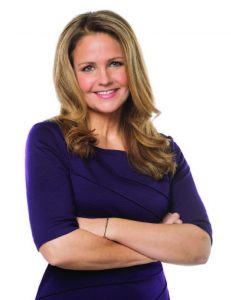
Courtesy of ABC-TV/Channel 7
ABC’s Michelle Charlesworth
Clawing your way to the top of the New York news business is not for the faint of heart. Staying at the top not only takes talent and tenacity, it requires the kind of authenticity that connects with viewers, who trust you to get every story right. And, of course, an occasional bit of luck. Michelle Charlesworth, longtime reporter and anchor for Channel 7, paid her dues on the way to joining the Eyewitness News team in the 1990s. However, it’s what she endured on the job—including a skin cancer scare and near miss on 9–11—that helped endear her to fans and define her as both a person and a professional. A Jersey Girl (since age 13) with a lifelong love of TV journalism, Michelle is as honest and skilled a storyteller as you’ll find on the air.
EDGE: When did the journalism bug first bite you?
MC: It started with my grandmother Jean, my dad’s mother. We would watch Sunday Morning with Charles Kuralt together. It dawned on me around age 13 that I loved learning and I loved people and I loved traveling. What if I could get paid for this and never grow up? What a great racket!
EDGE: Whom did you model yourself after?
MC: I gravitated to Judy Woodruff, who [like me] was a Duke person. She wasn’t flashy, yet she had a no-nonsense approach to finding things out that, to me, seemed very elegant. I loved to watch her do interviews on television. She had a way of breaking things down where she would stop, back up and say Please clarify this. For me, coming of age when women were achieving more power and more parity, it was great to see that work like this was possible. I also admired Diane Sawyer and Charles Kuralt—salt of the earth, everyman, a North Carolina guy—and I loved Charlie Rose, who’s the king of giving a little bit of himself so his guests give more back.
EDGE: Why broadcast journalism over print?
MC: I was always interested in the creativity that television affords one. Now I like the challenge. I’ll be out there covering the same story as my friends who are print journalists and they’re interviewing people on the phone in their car. I have to actually go get the person on television and get the pictures—that’s a challenge. But putting a story together is like making a little movie. Which is why I love television.
EDGE: What path took you from college grad to Eyewitness News in New York?
MC: I’d gone to graduate school for economics in Freiburg, Germany—I loved econ and poly sci—but at some point I thought, I don’t know what I’m doing over here. I want to go home and get a job as a reporter. I came back and sent out 208 résumés to different TV and radio stations. Nobody called me. Nobody bit. Nobody wanted to meet with me. So my mom said, “Why don’t you just go to these stations?If you pay for gas and Red Roof Inns and Denny’s, I’ll bring some library books and go with you.” So we took our station wagon and began zig-zagging through Virginia, North Carolina, South Carolina, Georgia and all the way down to Ft. Myers. We’d stop at the stations that didn’t write me back or take my phone calls. I’d wait two minutes, two hours—however long it took to talk to somebody. I offered to work free for a month to learn if I could really make a difference and be good at this. The only news director who kind of offered me a job was at WYFF in Greenville, South Carolina. Many years later, he called me and said, “Gosh, I knew you’d do something.” I couldn’t believe he remembered me. Anyway, when we got down to Ft. Myers I called home and my dad said, “Atlantic City called. They’ve got a radio station job and an assignment desk job at the TV station.” It was WMGM Channel 40, the smallest NBC station in America. It was run out of a garage in Linwood, next to a 7–11. It paid $6 an hour. I said, “Oh my God! I’ll take it!”
EDGE: Small station, big responsibility?
MC: I worked very long hours. I think I made $14,500 that year. But I was hooked. I loved doing radio. I loved ripping stories. I loved writing stories in different ways. We didn’t have the Internet then, so I would call all the fire and police departments in the surrounding towns. I would just call and call and call. I spent my life on the telephone. I worked there as a reporter and later as a fill-in anchor for a year and a half. Next I worked down in New Bern, North Carolina for WCTI Channel 12, then WNCN Channel 17 in Raleigh for two years.
 EDGE: And then you got the call.
EDGE: And then you got the call.
MC: Bart Feder, the news director in New York, saw me on somebody else’s audition tape. I was fill-in anchoring and I called out a story, saying,  “We don’t have enough information on this. I don’t even understand what we just showed. We’re going to get that for you. I apologize.” Then the co-anchor said, “This is ridiculous. I can’t believe we dropped the ball like this. That’s awful.” Well, he thought it was a great moment and he inexplicably put me and him on his tape. So the news director called me and said, “This is Bart Feder from WABC in New York. I’ve heard great things about you and I was just wondering what else you’ve done.” I said, “Sir, let me just stop you there. I loved doing radio, but I want to stay in TV.” After a long silence he said, “I’m the news director at the flagship station for WABC- hyphen-TV.” I said, “Can we go back to 45 seconds ago when I wasn’t a complete moron?” He was laughing so hard. He said, “On your contrition alone, you basically just got the job.”
“We don’t have enough information on this. I don’t even understand what we just showed. We’re going to get that for you. I apologize.” Then the co-anchor said, “This is ridiculous. I can’t believe we dropped the ball like this. That’s awful.” Well, he thought it was a great moment and he inexplicably put me and him on his tape. So the news director called me and said, “This is Bart Feder from WABC in New York. I’ve heard great things about you and I was just wondering what else you’ve done.” I said, “Sir, let me just stop you there. I loved doing radio, but I want to stay in TV.” After a long silence he said, “I’m the news director at the flagship station for WABC- hyphen-TV.” I said, “Can we go back to 45 seconds ago when I wasn’t a complete moron?” He was laughing so hard. He said, “On your contrition alone, you basically just got the job.”

Courtesy of ABC-TV/Channel 7
EDGE: 2017 will mark your 20th year with Channel 7. A lot of news people make it to the New York market only to disappear a few years later. What is it that enabled you to carve out such a niche?
MC: I am so grateful, first and foremost, that I work for a TV station that doesn’t make a lot of changes. They cling steadfastly to the choices they make, and recognize that our viewer does not like a lot of change.
EDGE: Local news is like comfort food.
MC: You’re right. But a lot of local TV stations don’t believe this. Some change all the time. I’m out in the field and I’m friendly with the reporters from other stations, but often I don’t know who these people are. At Channel 7, we have so many people who’ve been there 15, 20, 25, 30 years. We have a photographer celebrating 50 years at WABC this year. Our station is great about promoting people and staying the course. They are very rooted in You’re here. You’re good. You’re going to stay. So that doesn’t mean I’m great…but I’m good or good-plus. I’m lucky to work at a place that makes a commitment and sticks with it. Loyalty is important in this place.
EDGE: In 2000 and 2001, in a very compact amount of time, you did your skin cancer story and then reported from the scene of the trade towers on the morning of 9-11. How did those experiences, coming so close together, shape your life and career?
MC: They definitely got me hitched, those two things. I realized that we don’t know how long we’re going to be here, that there’s a timeline we don’t know about. I had the great fortune—I thought it was a misfortune at the time—to have my face blow up. I had all these stitches. I looked like a monster. Here I was crying in the bathtub and my boyfriend, Steve, gets in the tub fully clothed and embraces me. You don’t get to try guys out like that, to see if they’ll be there for better or worse. He passed the test with flying colors. I got the chance to see that he was a keeper.
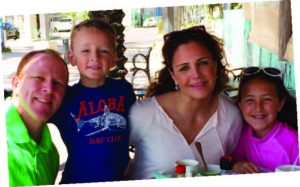
Courtesy of Michelle Charlesworth
At the worst possible time, he really came through for me. I knew that he was my partner forever—even though we weren’t even engaged yet, even though I didn’t want to get married, even though I didn’t want kids. And then on 9–11, here I was, the first person broadcasting live, from the West Side Highway. We were being told by firefighters that the whole West Side Highway was going to blow up because there is a gas main the size of a city bus that runs the length of it, and it hadn’t been turned off or secured. No one has ever really told this story. I thought I was going to die. After what I’d seen, with the two towers down, I thought anything could happen. I started almost giggling to myself as I was running, thinking Boy, am I stupid. I’ve been worrying about all the wrong things. I never got married. I never had kids. So I had this amazing epiphany. The worst day in the world had the best message for me. It really did. Now Steve and I are married and we have two kids, Isabelle and Jack. There you go.
EDGE: The skin cancer story began as someone else’s story assignment.
MC: Right! I wasn’t even supposed to be on it! It was a “Lunchtime Lipo” story. One of the feature reporters couldn’t make it that day, so here was this story about how you could stop in and get your fat sucked out. I thought, Okay…this is interesting. I’ll do it. And then as we were leaving the doctor’s office, my photographer asked about a mole on his eyebrow. I said, “Hey Frank, you’re not supposed to ask that. It’s not professional.” The doctor, Bruce Katz, said, “No, don’t worry about it…but I’d like to ask you about this thing on your cheek, next to your nose.” I thought he was kidding. I told him that every time I get a facial they just pop it. And he said, “Well, they might be popping your cancer. I want to biopsy that thing on your face right now.” Forty-eight hours later I realized he was right—I had a basal cell carcinoma.
EDGE: So had they put someone else on it, the outcome for you personally could have been very different. Isn’t it interesting how small moments can create such a profound ripple on people’s lives?
MC: Talk about a throw-away moment! Had Frank not asked about his eyebrow and had I not scolded him…had I not filled in and been on that story that day…luck, luck, luck.
EDGE: How long was the procedure and what did they do?
MC: It took all day long. First, they did a Mohs surgery, where instead of removing the cancer they take out a little bit at a time and keep checking the margin. Take a little out, go in and check, take a little out, go back and check. I ended up with a huge hole in the middle of my face that was the size of five or six dimes in a stack, which they sewed up. That took the longest time. Dr. Michael Bruck sewed me back together and he did an amazing job. He had to cut a football shape around the opening because if you just cut a circle it “puckers.” By elongating the defect, the two sides go together a lot better. Now I don’t even think about it, thank heaven, because the scar went from my nose to the side of my mouth, probably two inches. It was done so well. Dr. Bruck put it in my laugh line. I don’t even have to put makeup on it.
EDGE: In your case, you suspect that your cancer is related to where you spent the first 12 years of your life.
MC: I have two hometowns, Durham, North Carolina and Princeton, New Jersey. I was born in Durham and lived there until I was 12. My dad was a professor at Duke University. There was arsenic in the well water where we lived in Durham. It was a well-documented study done at Duke Medical School, and interestingly one of the students who did that study, Dr. Ira Davis, ended up doing the surgery on my face—which I found out during my surgery. Crazy. I was telling him that I thought people who damaged their skin by having sunburns were the ones who got skin cancer, which I never had. He asked me where I grew up. Durham. Where? Cornwallis Road. He’s like, You’ve gotta be kidding me…past Kerley? Yes. He said, “We did a study on arsenic in well water in agrarian neighborhoods and that’s exactly where you were.” I said, “Yeah, we drank well water every single day. And we have cancer elsewhere in my family.”
EDGE: The entire experience was covered nationally on Good Morning America. Talk about taking one for the team.
MC: That was surreal. That was crazy. But it was good, because my skin cancer didn’t look like skin cancer and I don’t have a lot of moles. It touched a lot of people who went and got things checked out that didn’t look like classic skin cancer—people who, like me, weren’t typical candidates for skin cancer, who thought you should be looking for moles that have odd shapes or that change in color.
EDGE: You always hear about public figures who want to use their fame to do good. In your case, you were able to do so.
MC: Yes. Hopefully, my story helped change the way we think about skin cancer. I think it did. People still come up to me and say, “Show me your scar, Michelle.”
EDGE: Really.
MC: They do…and then they show me theirs!
 TAKE THAT, SUNSHINE!
TAKE THAT, SUNSHINE!
“Sunscreen is a part of my life,” says Michelle Charlesworth. “I wear it on my face and my neck 24/7, 365 days a year.”

John D’Angelo, DO Chairman/Emergency Medicine Trinitas Regional Medical Center
Dr. John D’Angelo, Chairman of Emergency Medicine at Trinitas, recommends that anyone who has had a skin cancer scare do the same. As for everyone else, sunscreen is a must any time you are likely to be exposed to the sun for long periods of time. What’s a long period?
“The sun’s ultraviolet rays can damage unprotected skin in as little as 15 minutes,” says Dr. D’Angelo. “Wear sunscreen with UVA and UVB protection with an SPF of 15 or higher and don’t be shy about reapplying it often.”
Some folks, he adds, need to be more vigilant than others, including those with light-colored skin, red or blonde hair, multiple moles or a history of sunburns.
“And obviously, if you have a personal or family history of skin cancer, like Michelle, you need to protect yourself at all times. And everyone should schedule routine skin exams with their physician or dermatologist.”
Editor’s Note: Michelle’s father, professor James H. Charlesworth, is still teaching at Princeton, where he is director of the Dead Sea Scrolls Project. Special thanks to Rob Rubilla for setting this interview in motion.
Author of Twelve Days of Terror: A Definitive Investigation of the 1916 New Jersey Shark Attacks
A century after these infamous attacks, what is known about them and what is still up for debate?
The first attack occurred late in the afternoon of July 1, in Beach Haven. The second occurred on July 6 in Spring Lake. Both victims were men in their 20s and both were killed. On July 12, there were three victims in Matawan Creek, two of whom were killed. The third person survived with serious leg injuries. What is still up for debate is how many sharks were involved, what the species was/were and, ultimately, why this series of ferocious attacks occurred in a place where attacks had never occurred before and haven’t since.
What were those 12 days of terror like for beachgoers?
People didn’t associate the water with dangers—they were more afraid of jellyfish, sharp stones and crabs. So the response to a predator attacking the limbs of bathers and killing four out of five people was what you might imagine it would be today. A shark attack is such a rare occurrence in New Jersey that I refer to the ferocity and frequency of these attacks as an “anomaly within an anomaly.” There was a fear of the unknown in nature and, as a result, there was a great reluctance to venture into the ocean after the attacks.
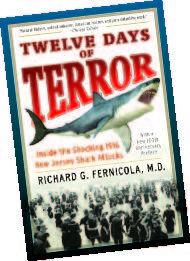 How did public perception of sharks change?
How did public perception of sharks change?
In 1916, a lot of people in the metropolitan area didn’t know what a shark looked like, or even have a grasp that there were multiple species. If an American bather spotted a shark prior to 1916, it posed as much of a danger as, say, a stray dog—certainly nothing life-threatening. The 1916 attacks baptized us to the potential danger of these predators if you were in the wrong place at the wrong time. The attacks also triggered what was probably the biggest shark hunt in history. People tried to catch and kill any large shark they could. When it became apparent that the attacks had ceased, that response changed.
In the 15 years between the original release of your book and the updated 2016 edition published in May, people have become obsessed with sharks. That’s helpful to you as an author, but how do you explain it?
I will say I’m very, very surprised at the response to films like Sharknado. I’m even surprised by the perpetual interest in “Shark Week.” I believe that it’s a combination of things, including the growth of social media and the immediate news feeds that give you reports of shark attacks from very distant lands. You also, over the last 20 or 30 years, have an increase in wholesome and accurate education about sharks to a whole new generation of young people, mostly through aquariums and research programs. I hate to use the word “sinister,” but there is something diabolically mysterious about the general appearance and stealthy maneuvering of sharks that continues to fascinate people.
So this summer, when people take Twelve Days of Terror to the shore, is it safe to put it down and go in the water?
Yes. Reading about attacks can sensitize you to the dangers of sharks, but that is completely unfounded, especially as it relates to New Jersey. The rarity of attacks in New Jersey should actually encourage someone to go in the water.
Editor’s Note: Richard G. Fernicola is a physician specializing in post-stroke and post-injury recovery. The 2016 edition of Twelve Days of Terror is published by Lyons Press and hit store shelves in May.



